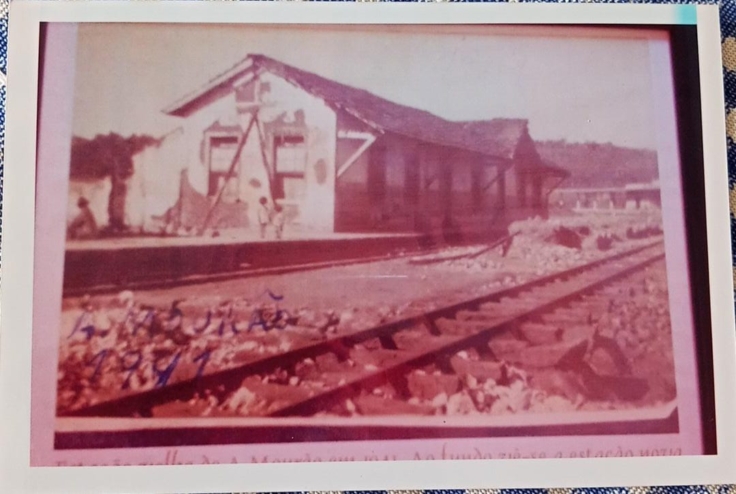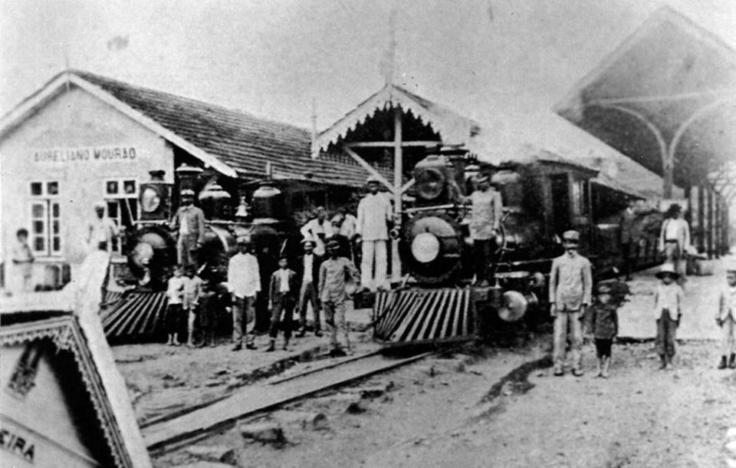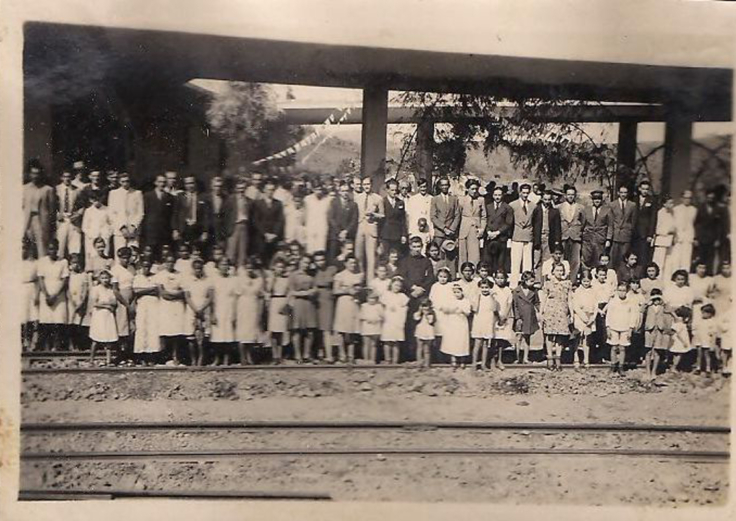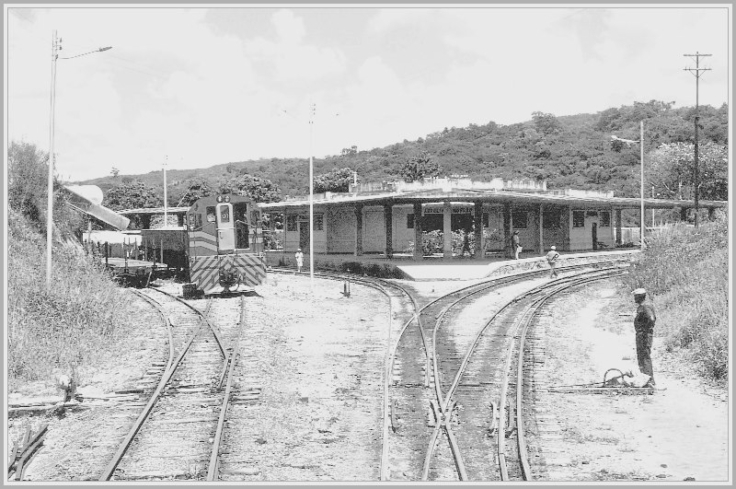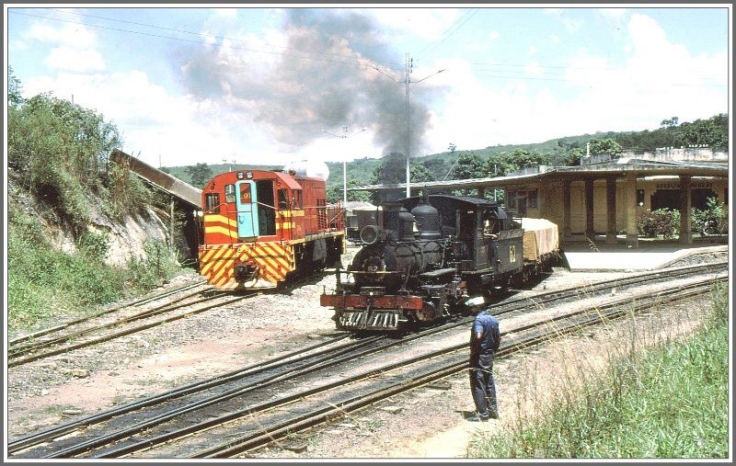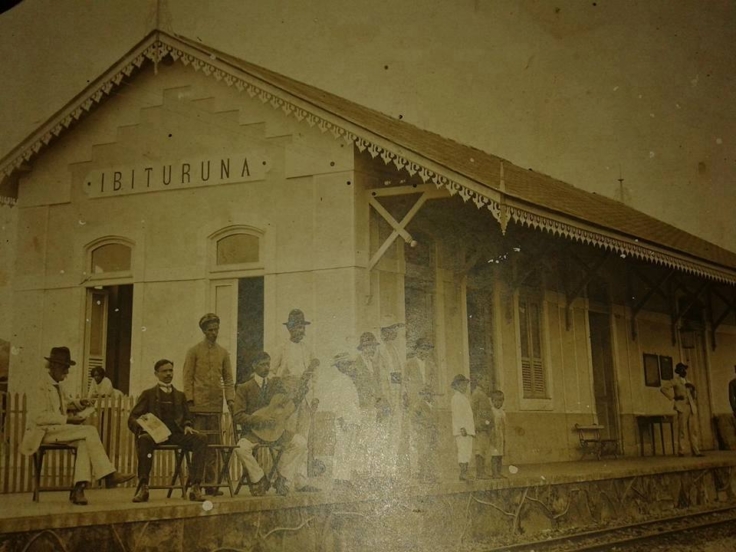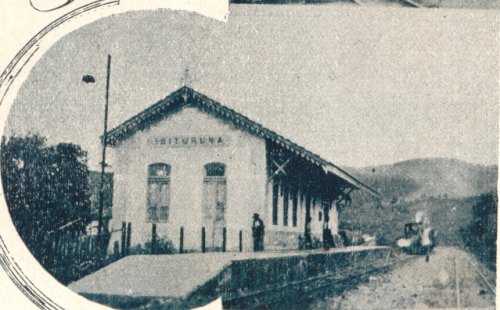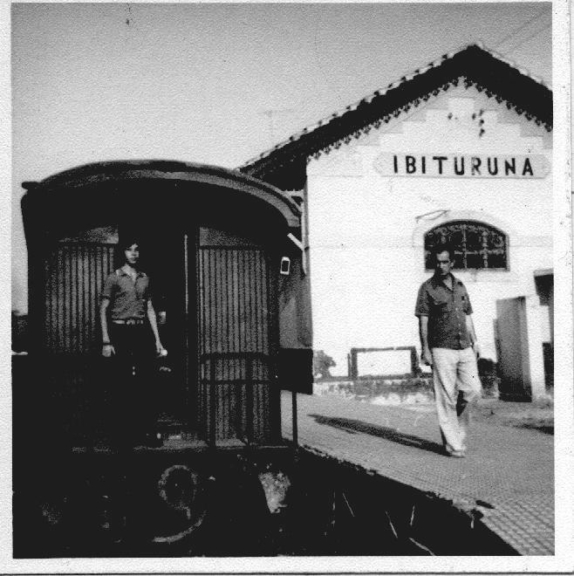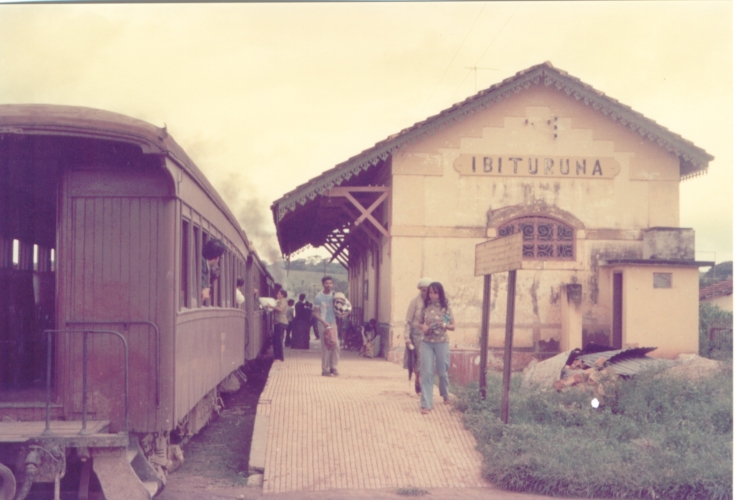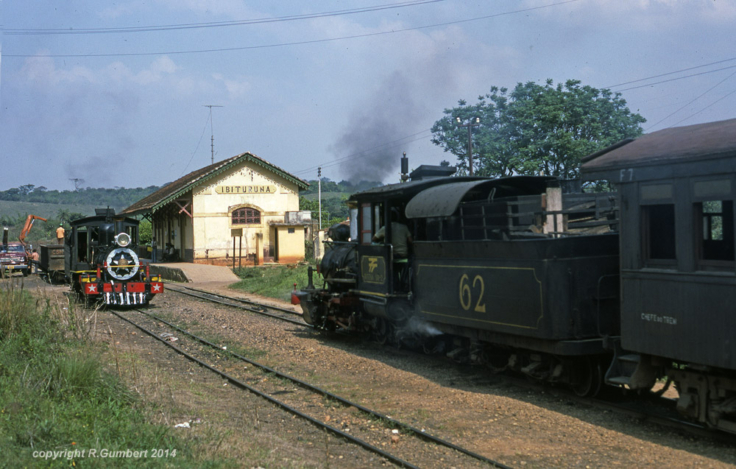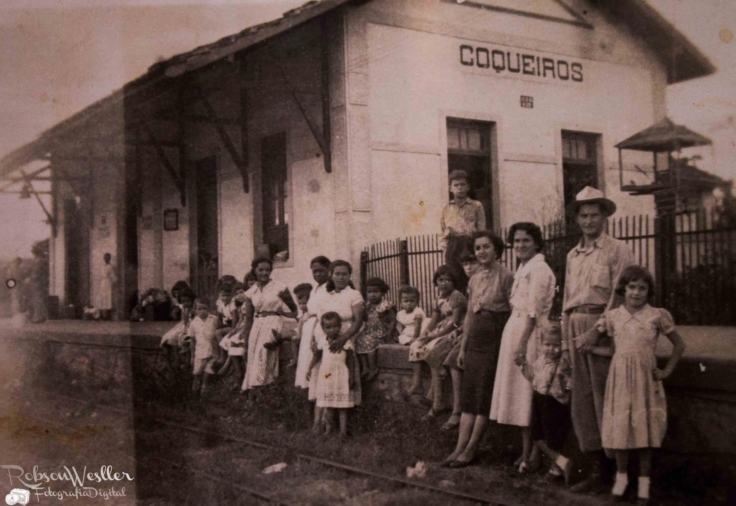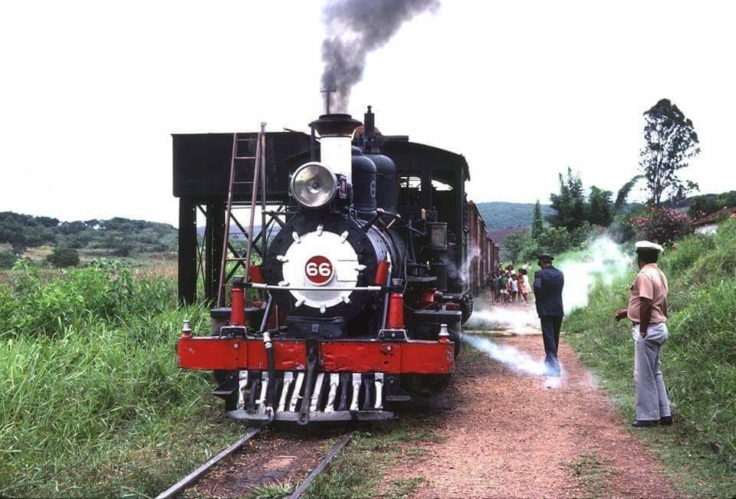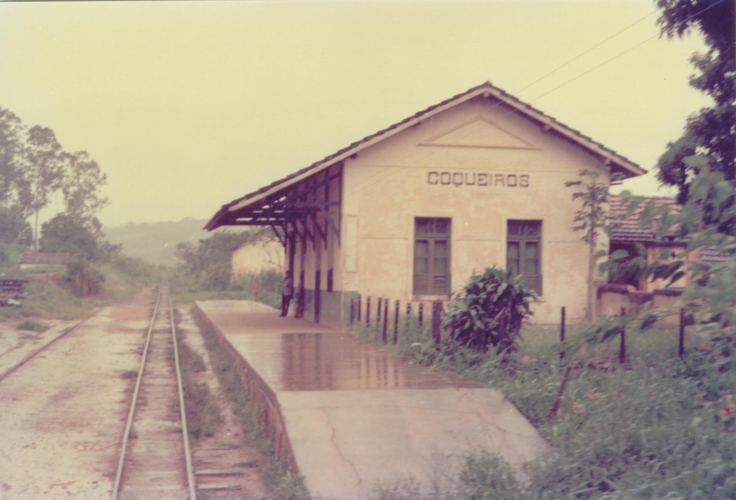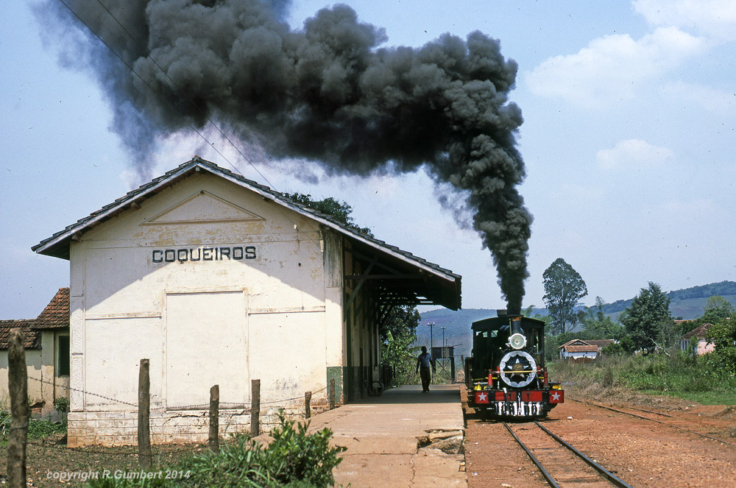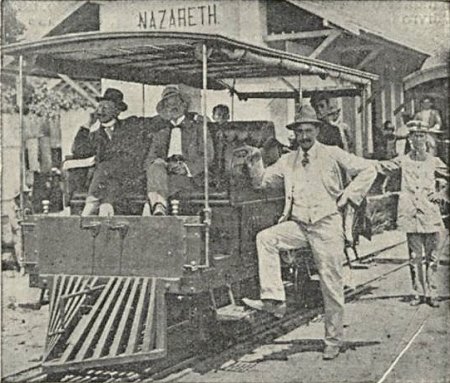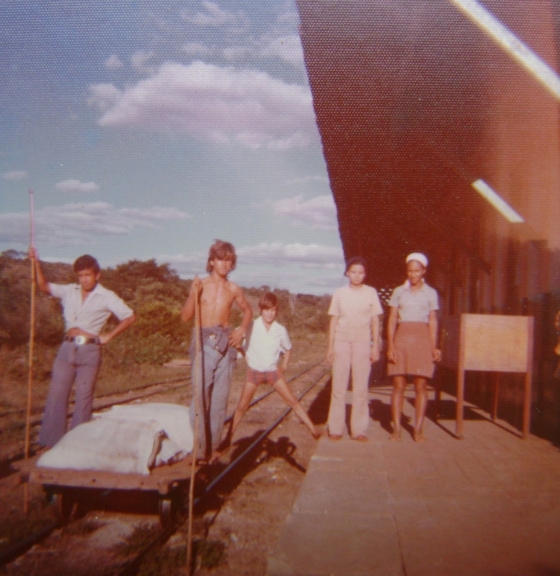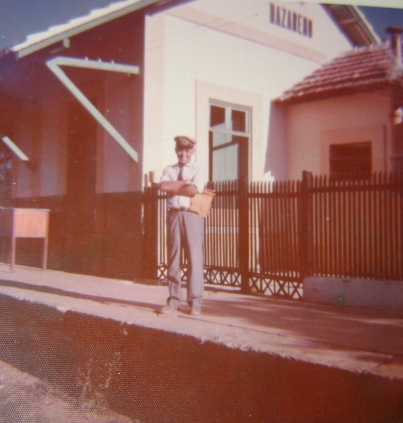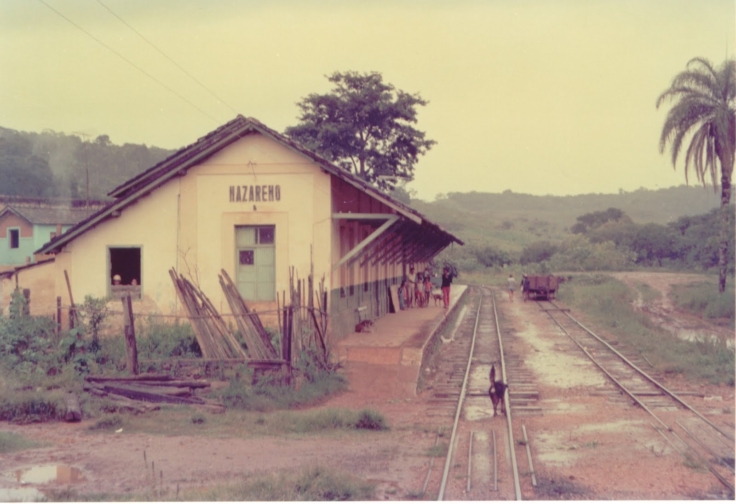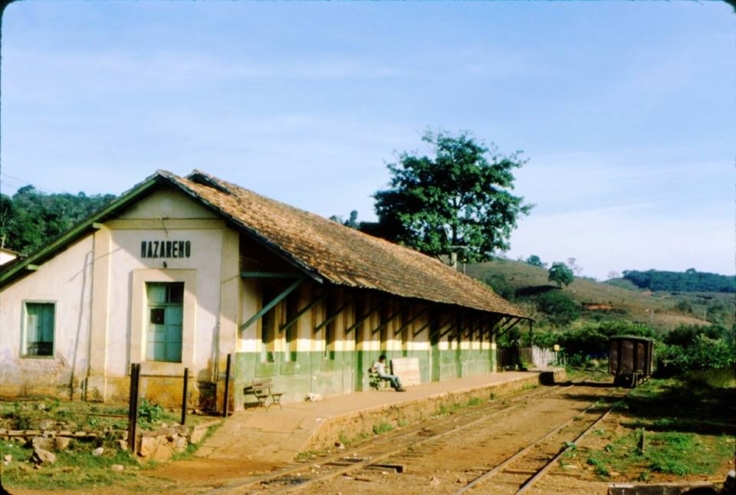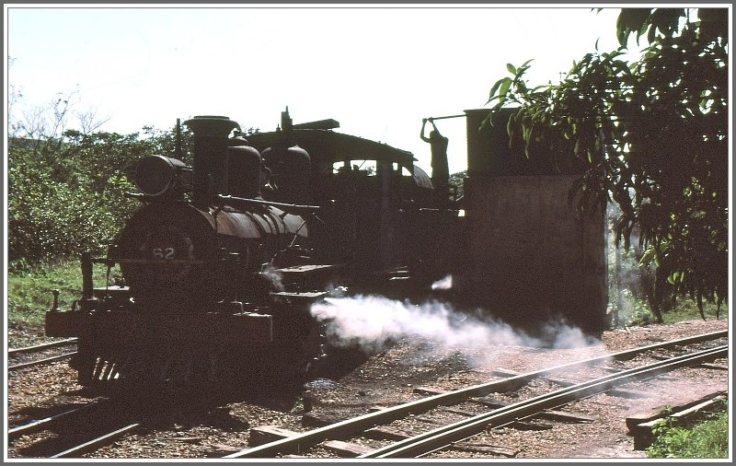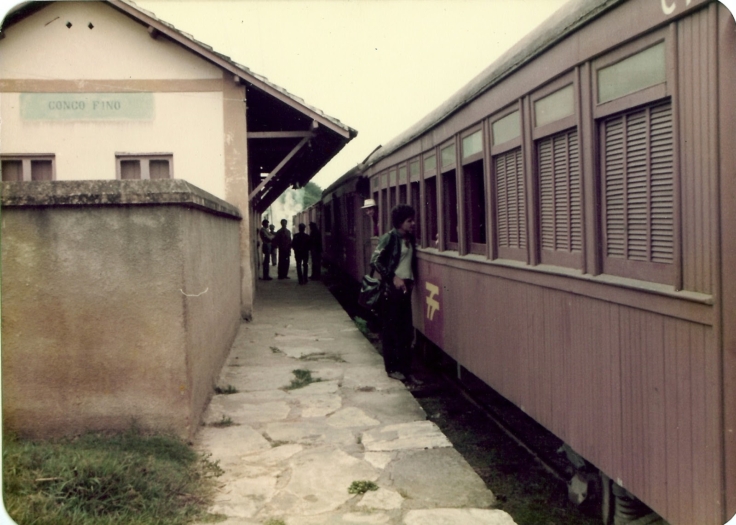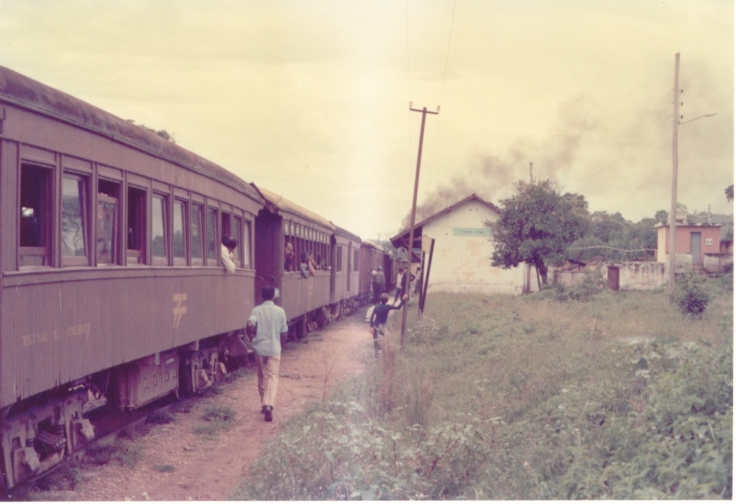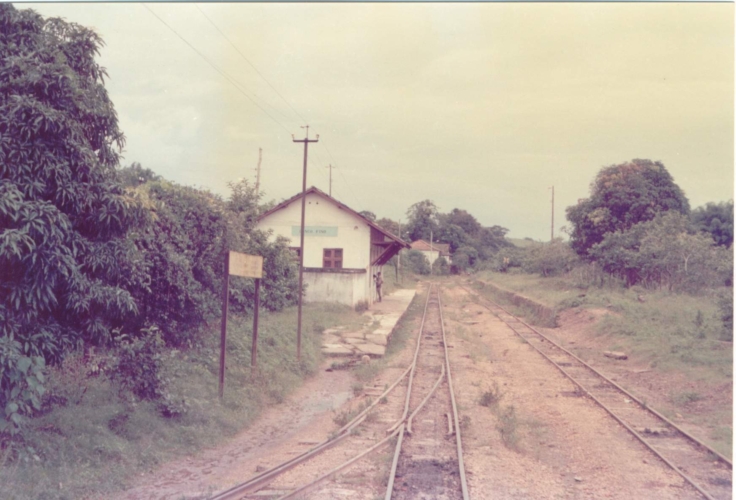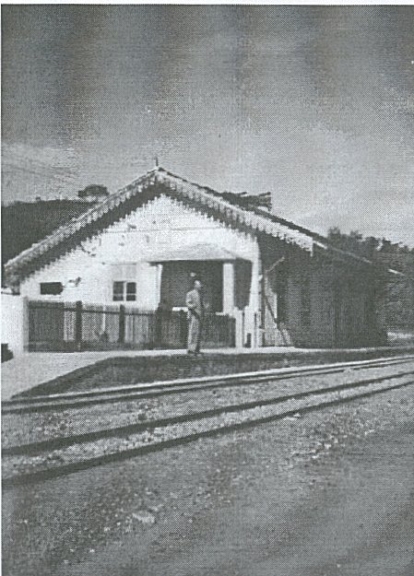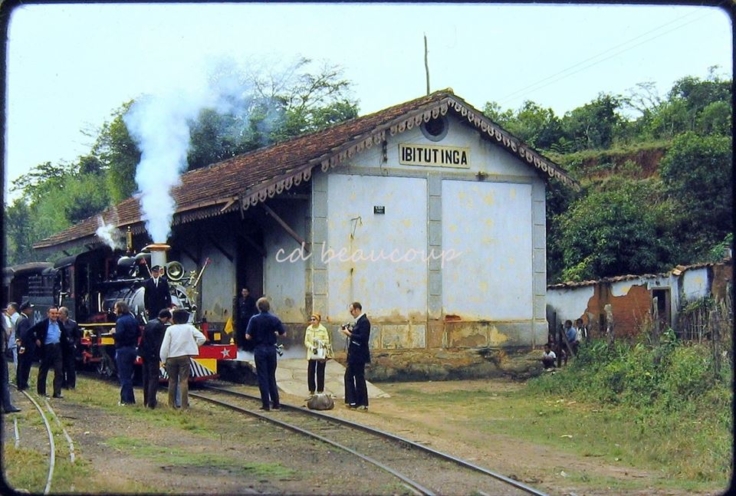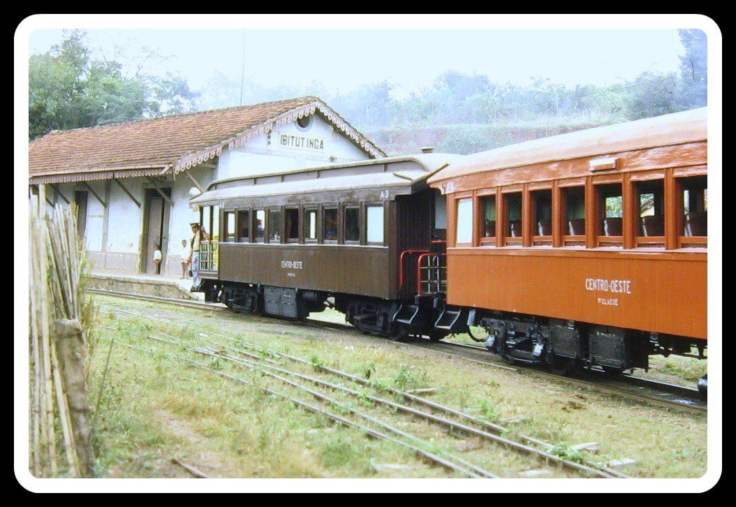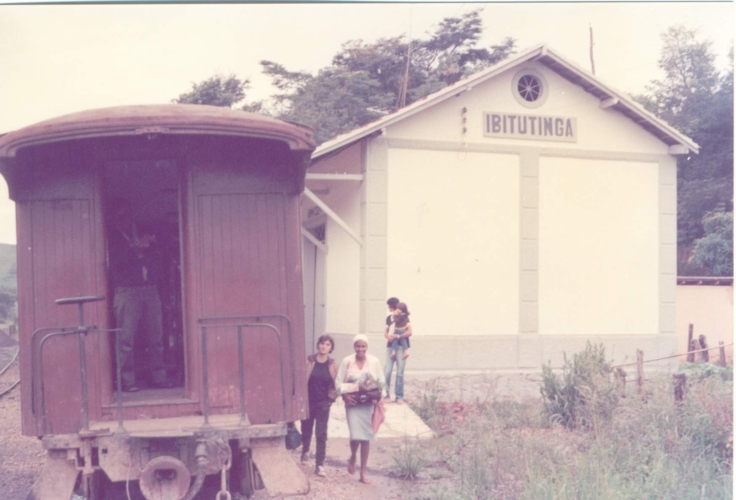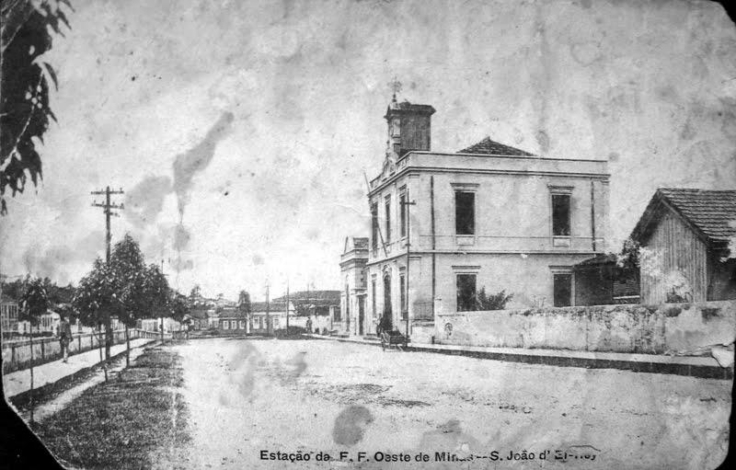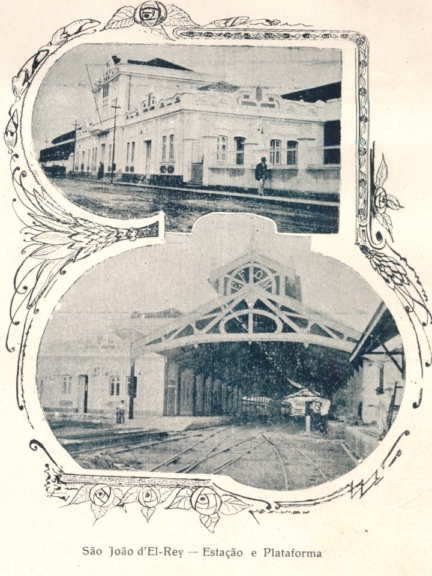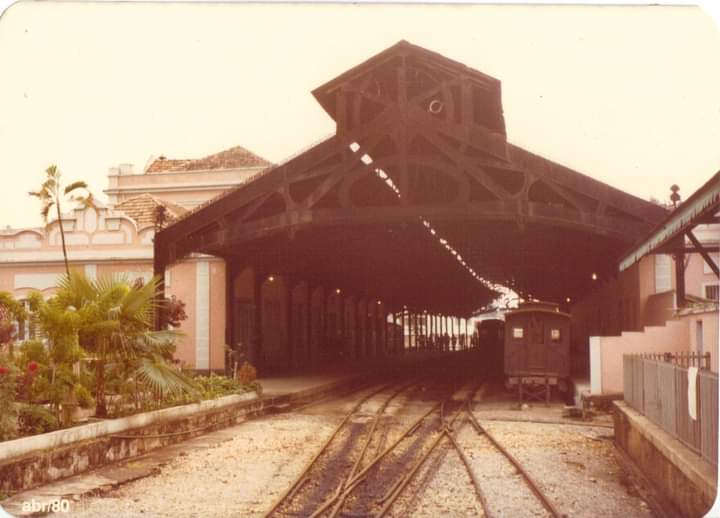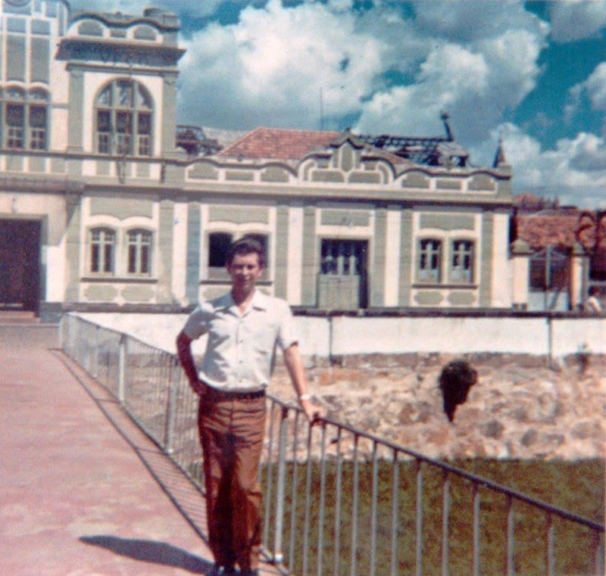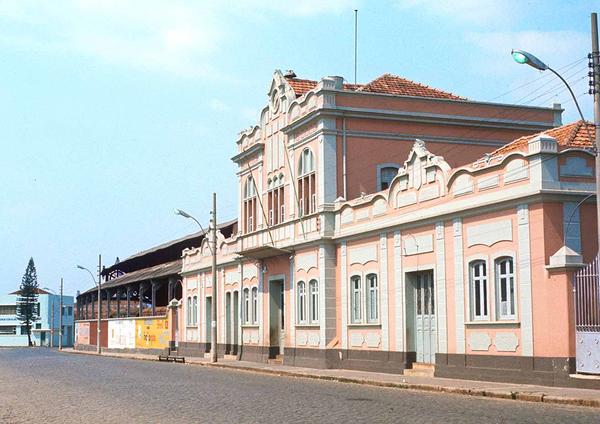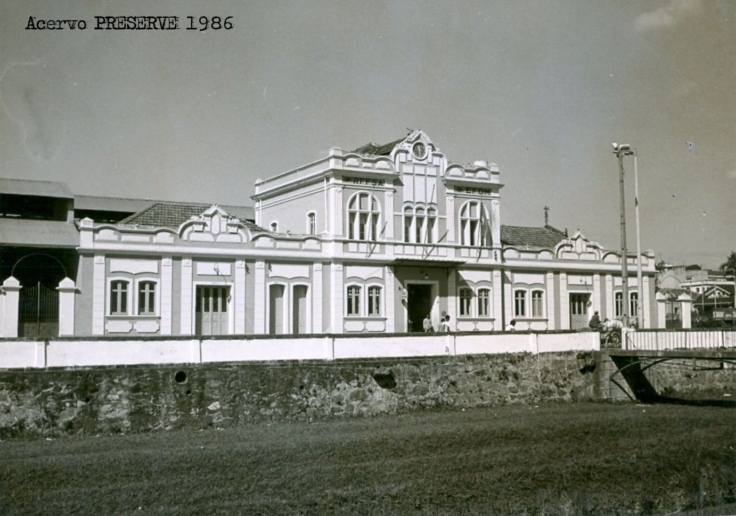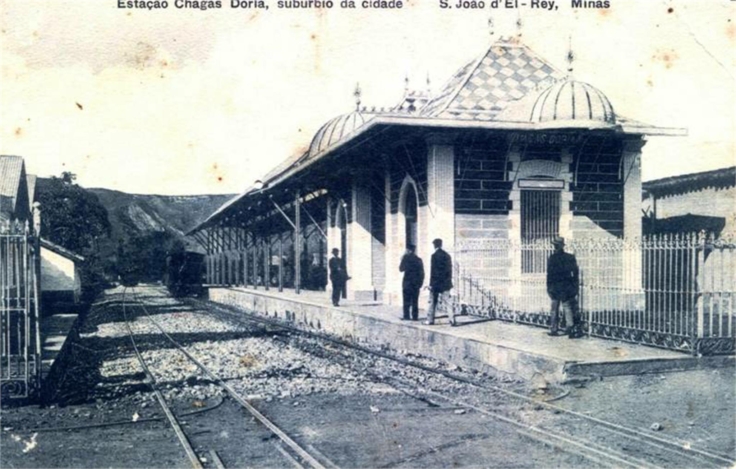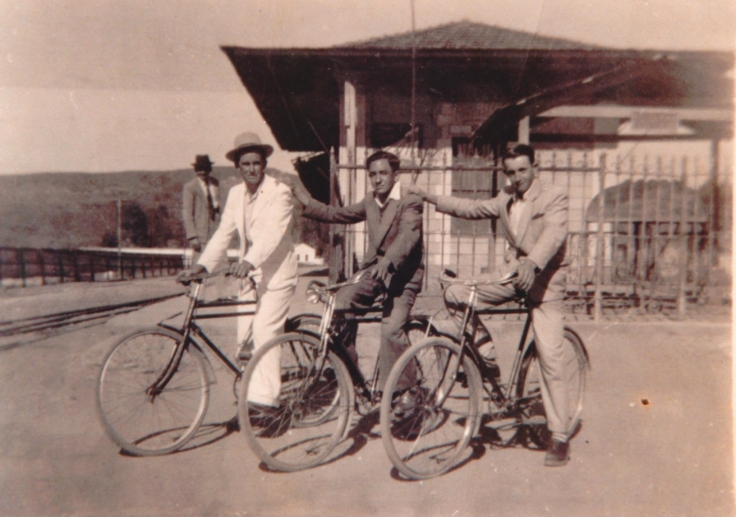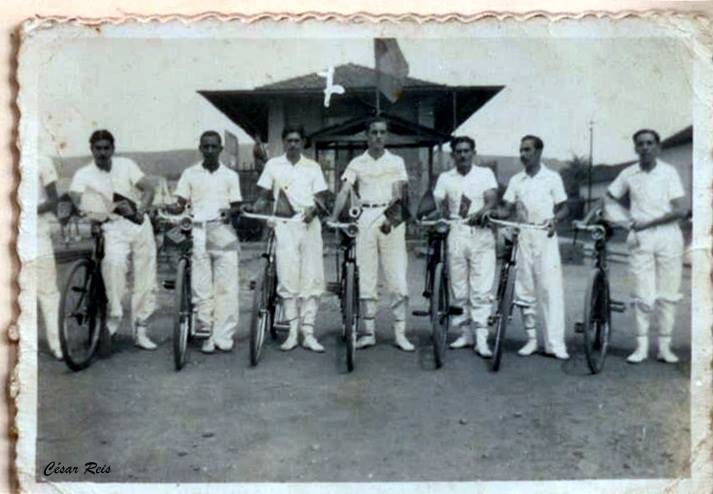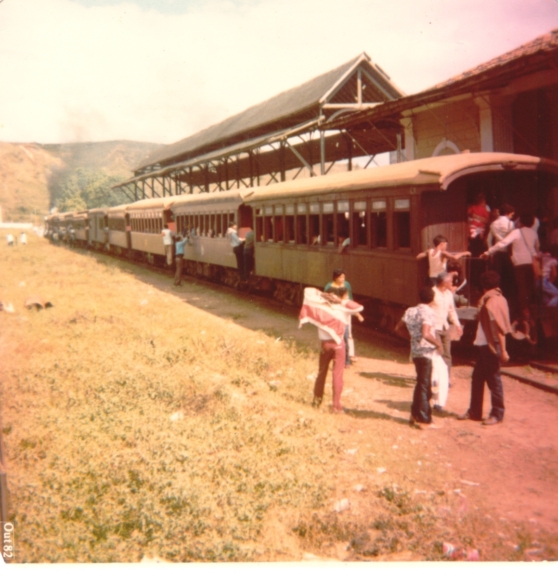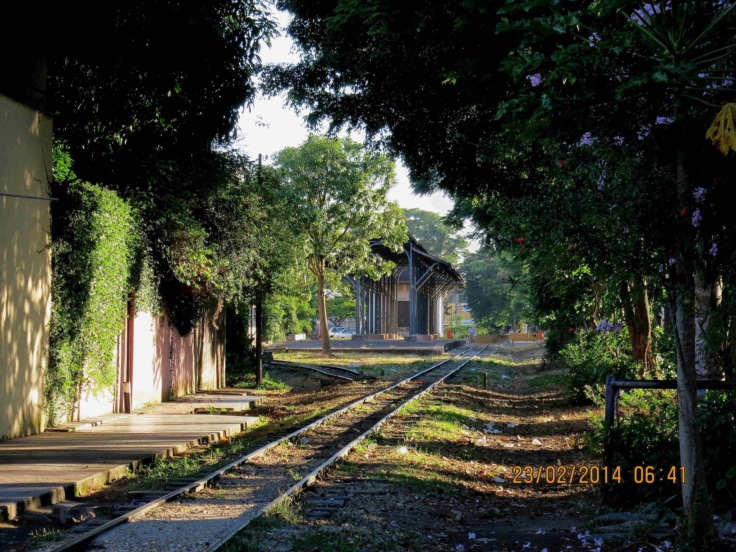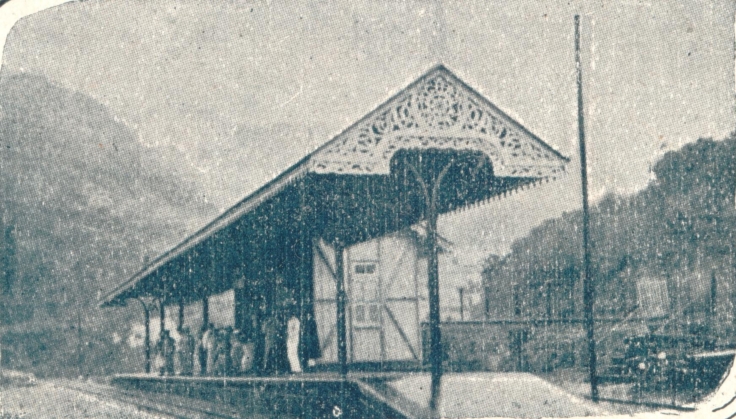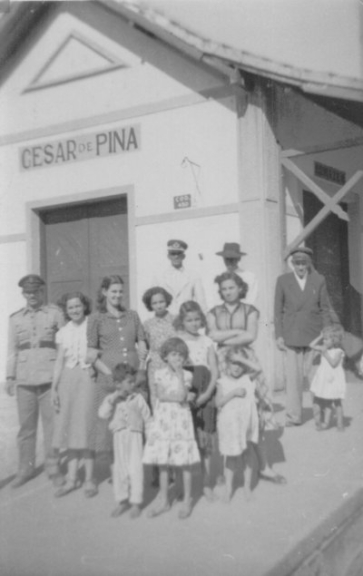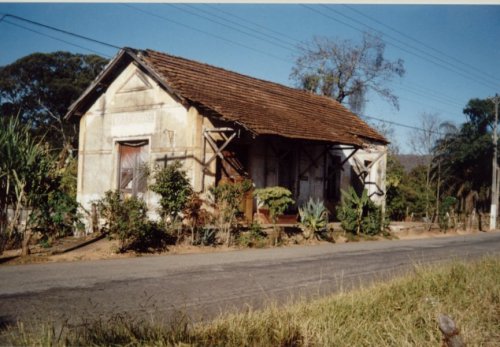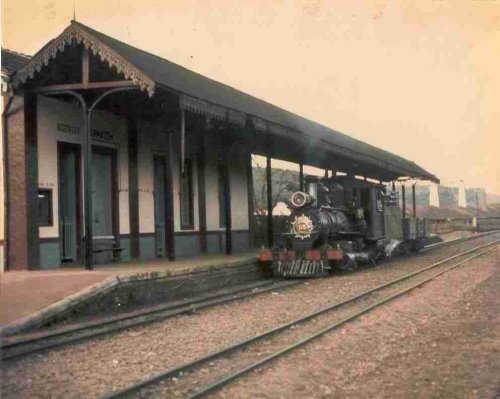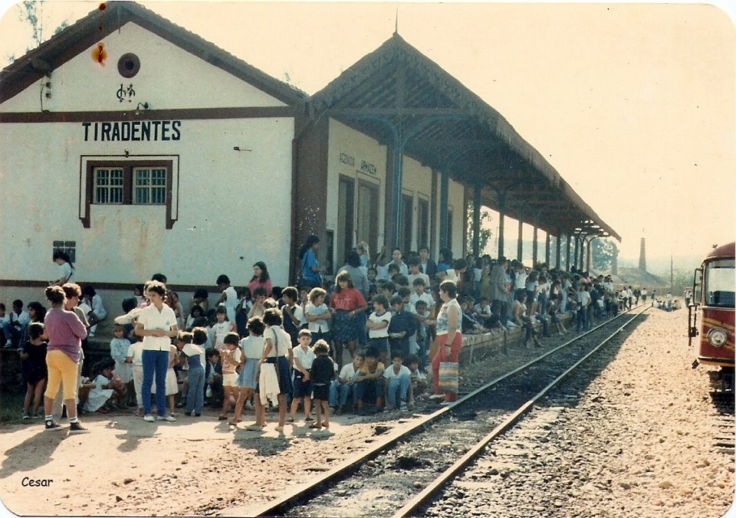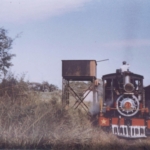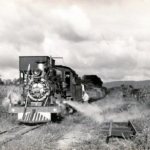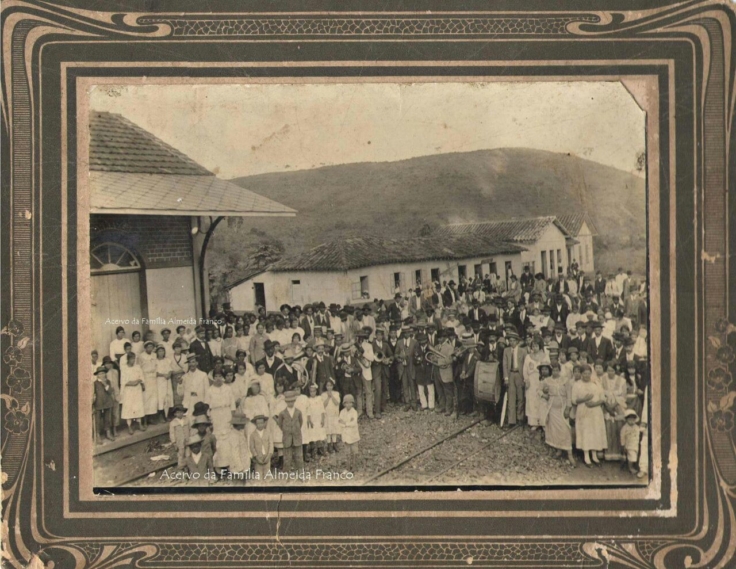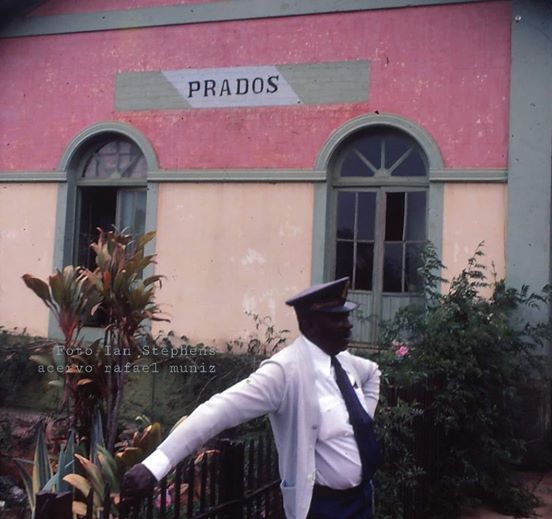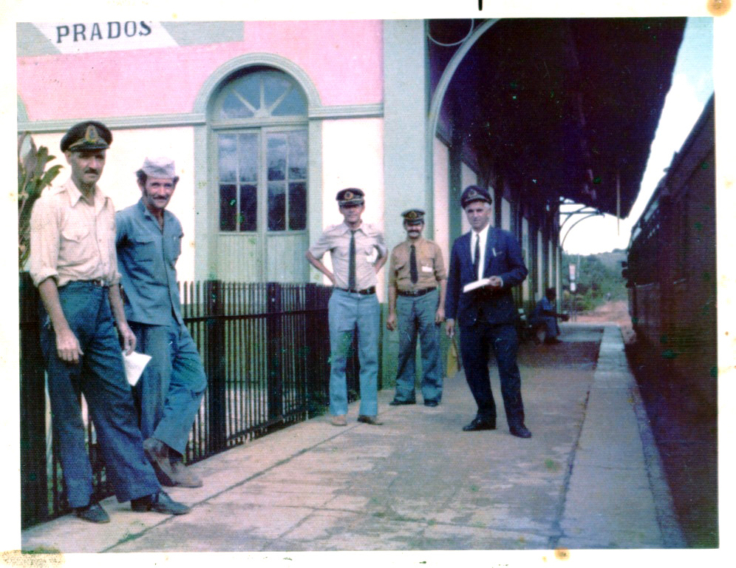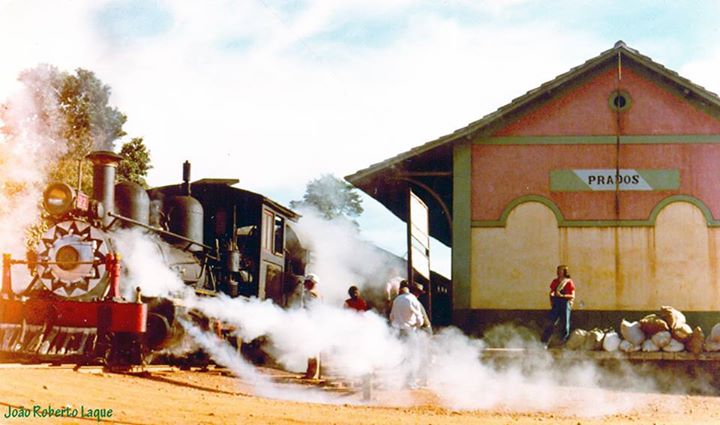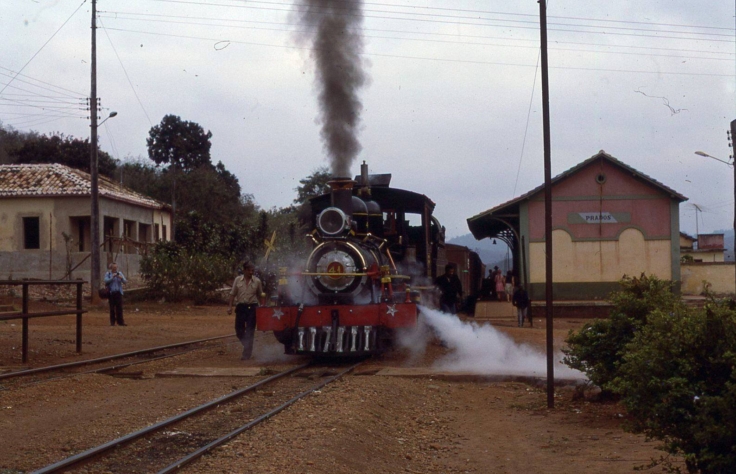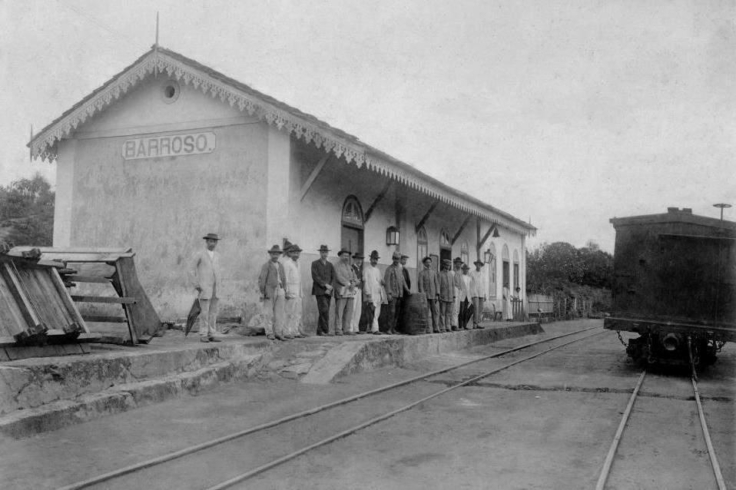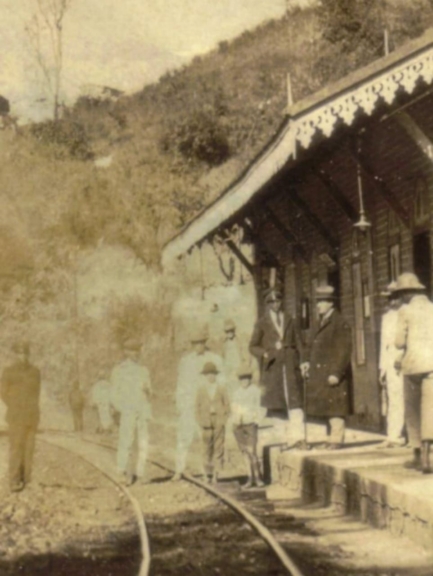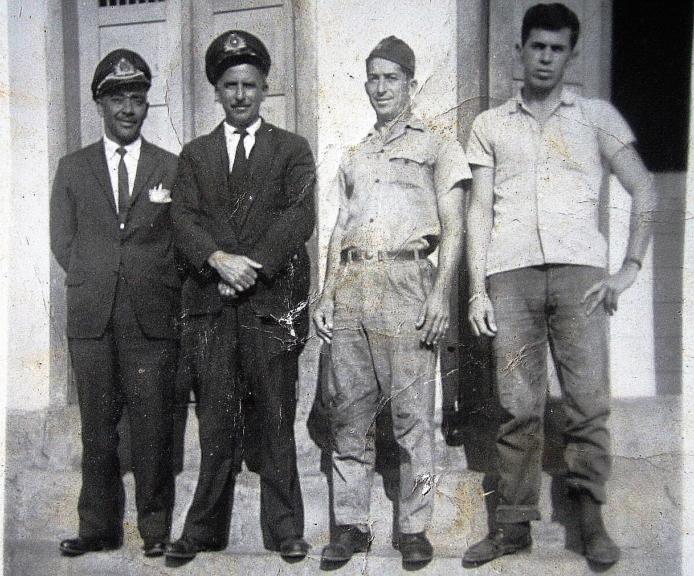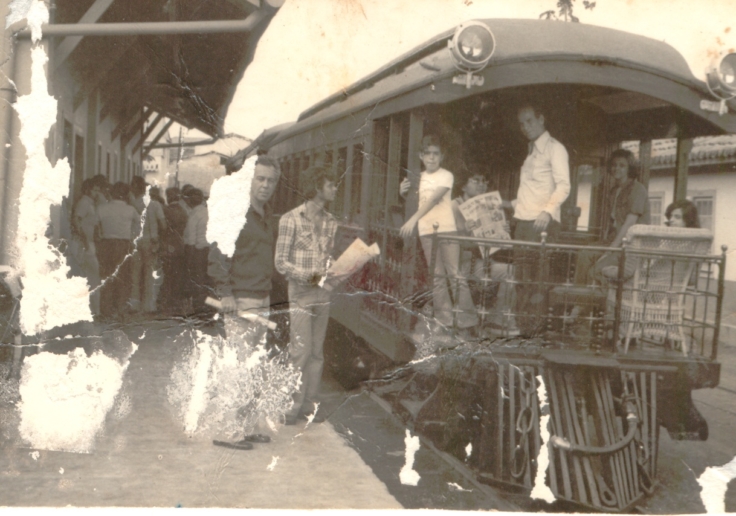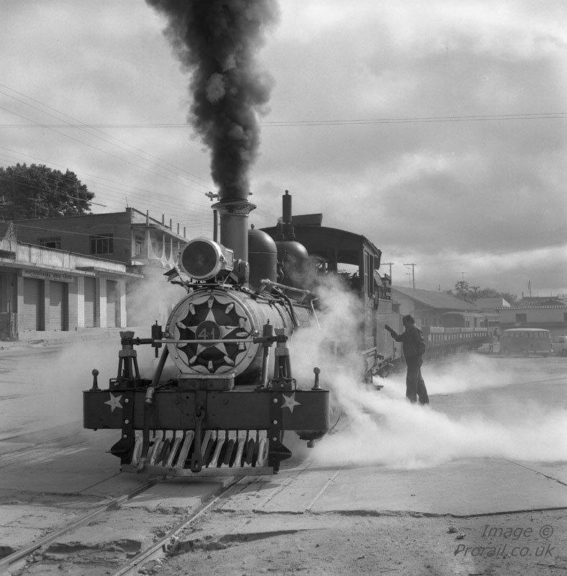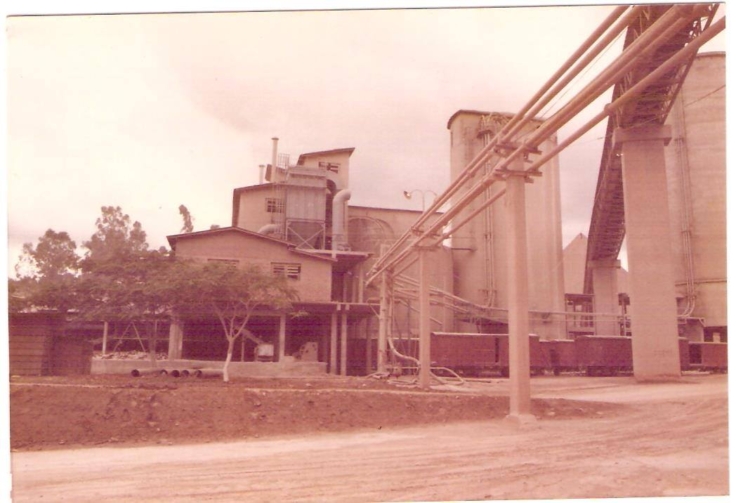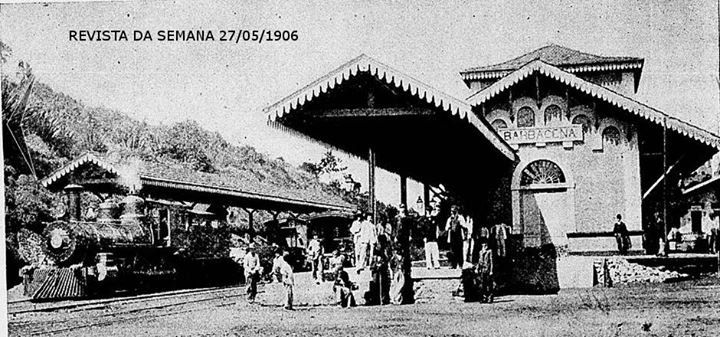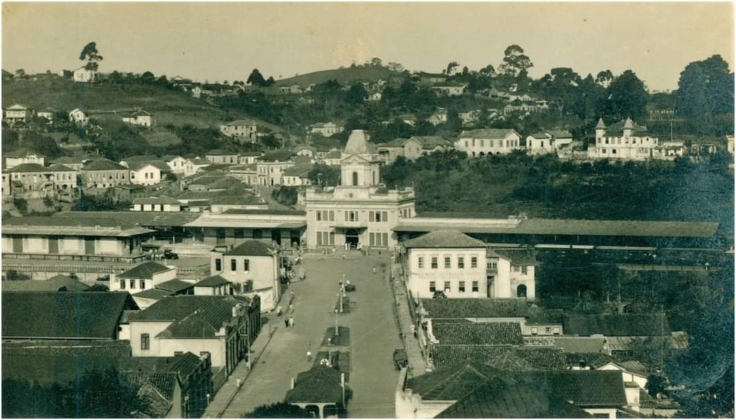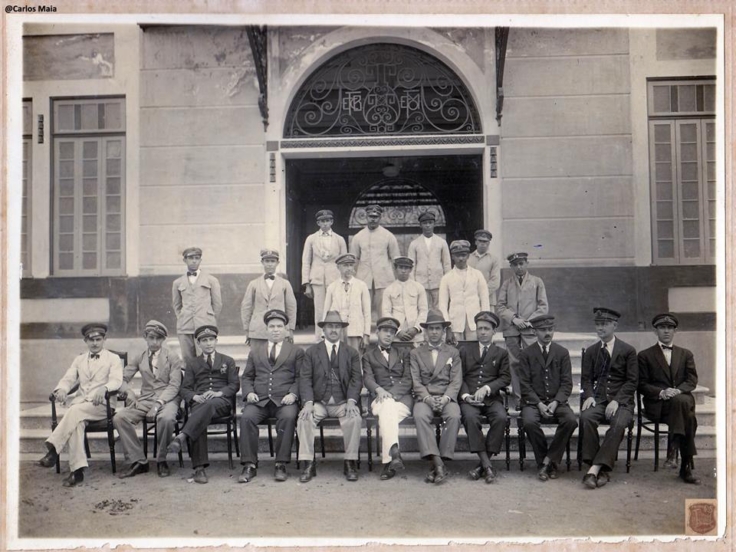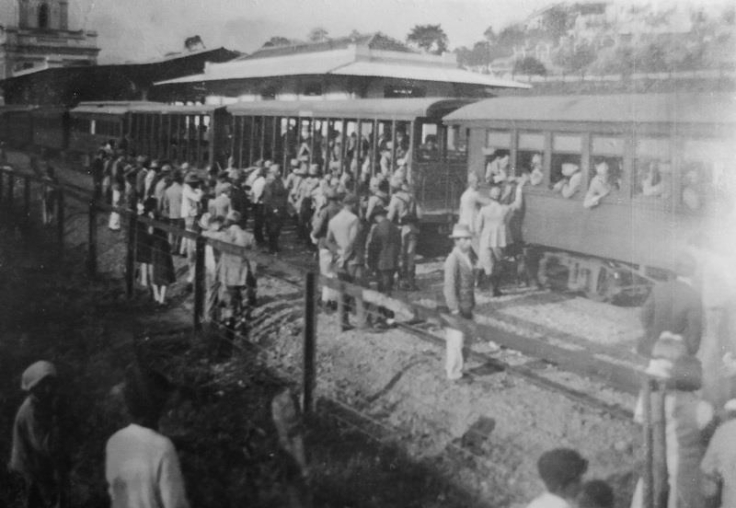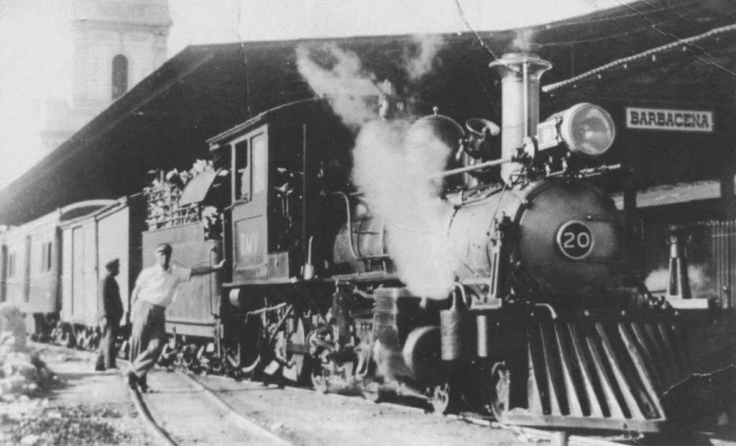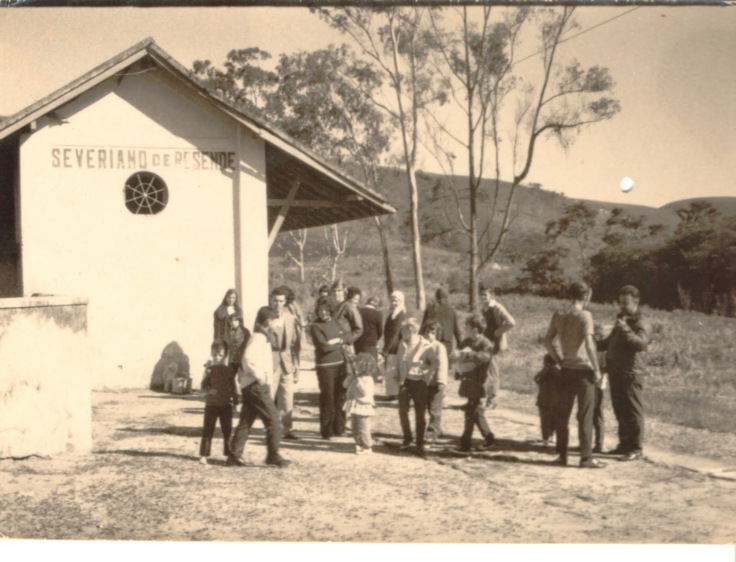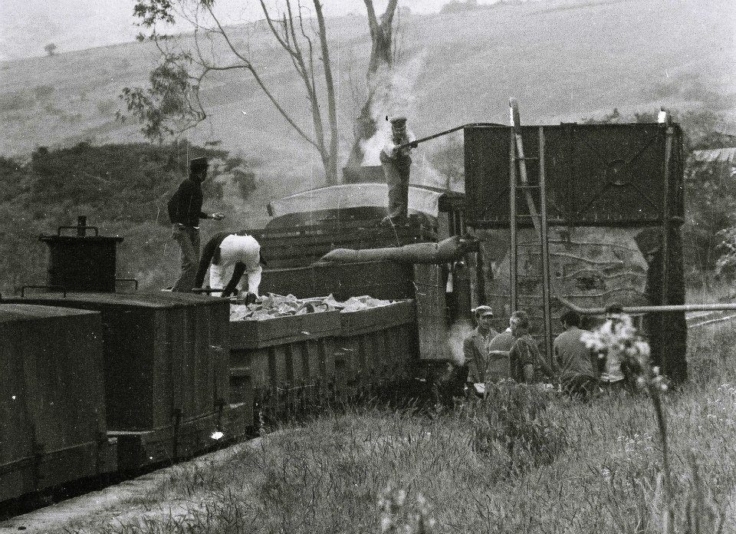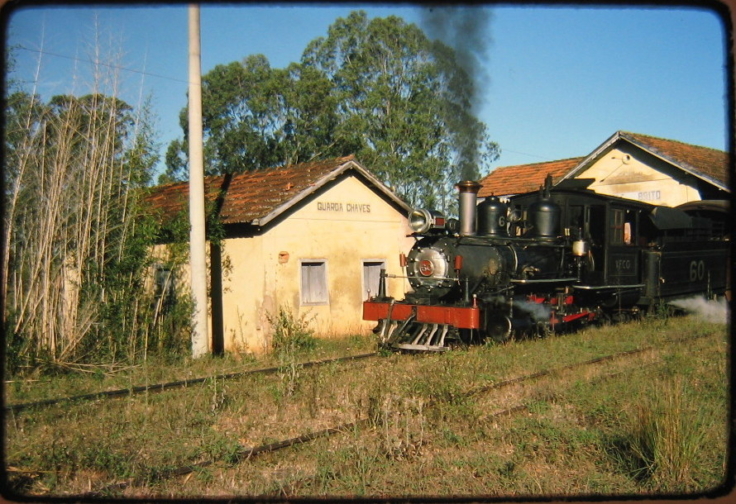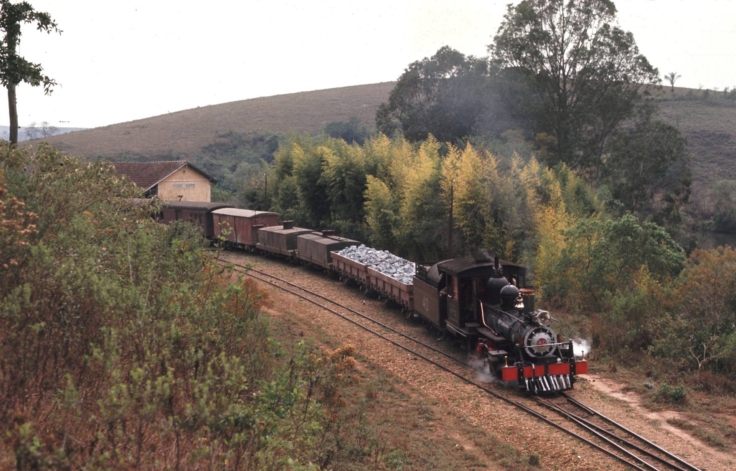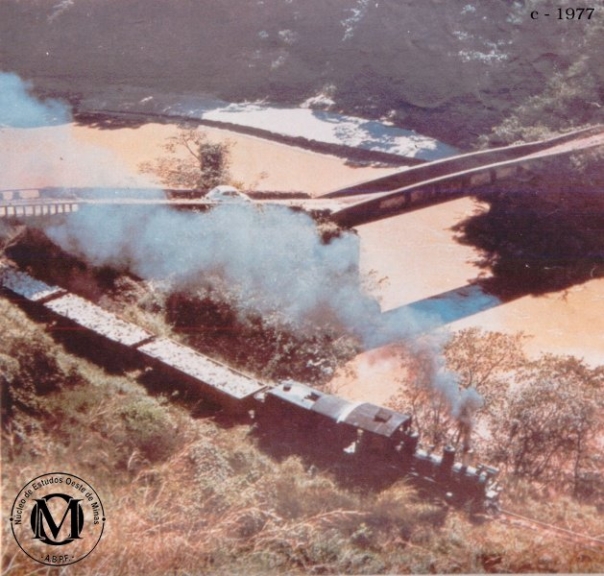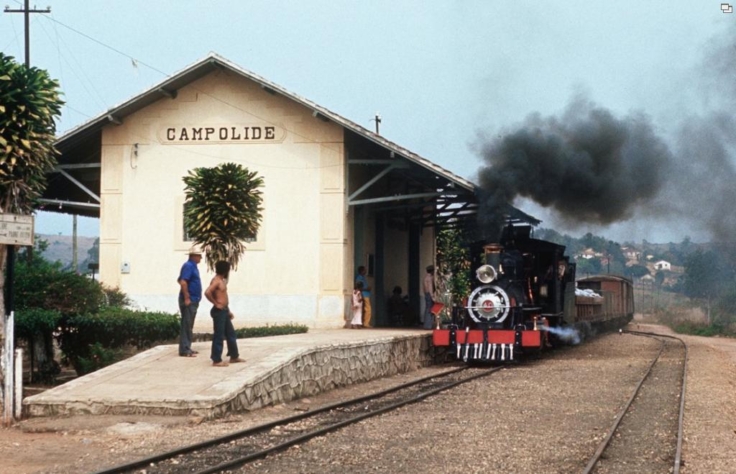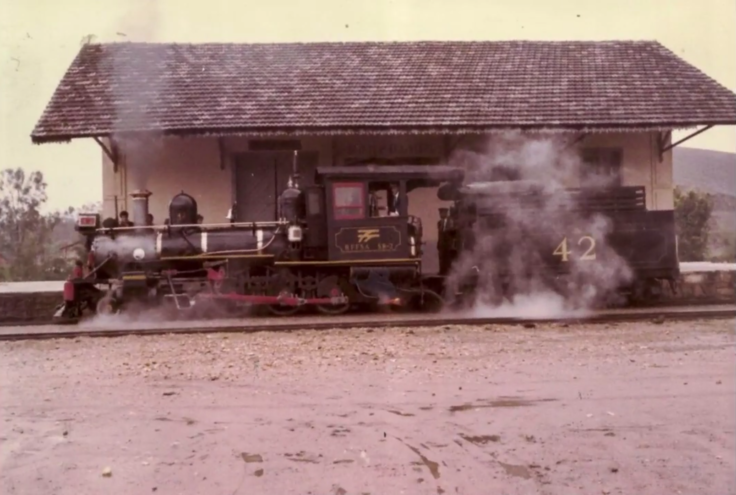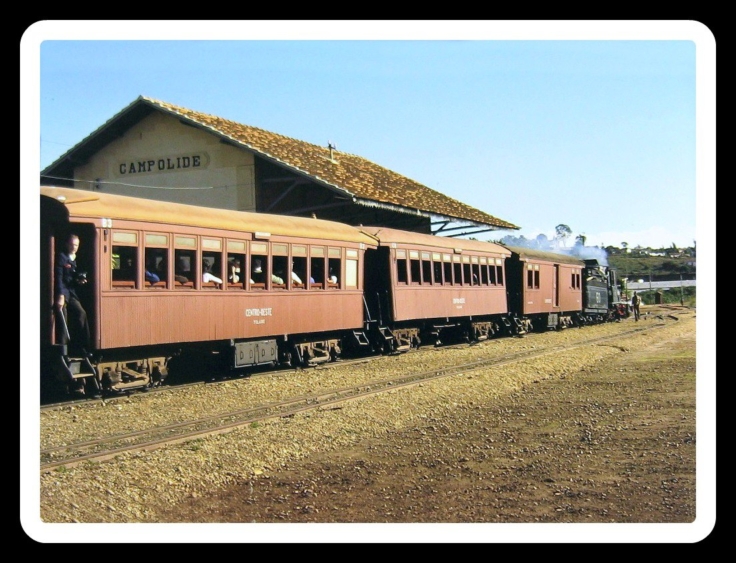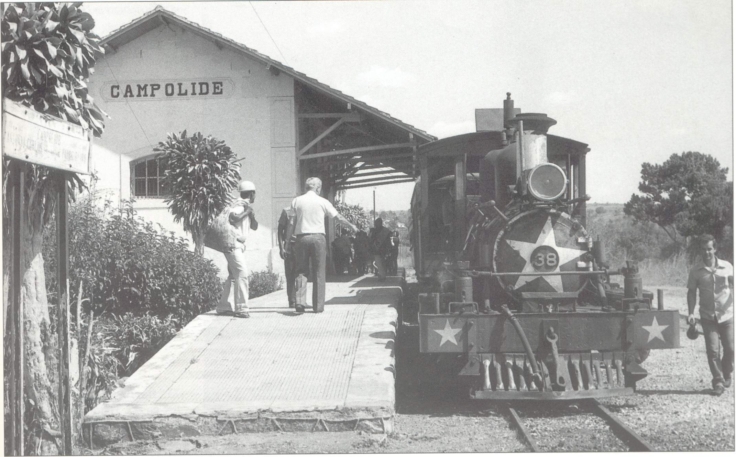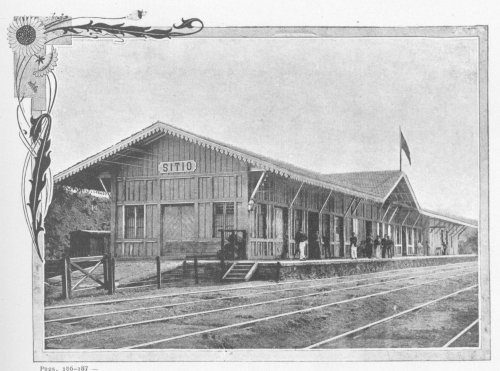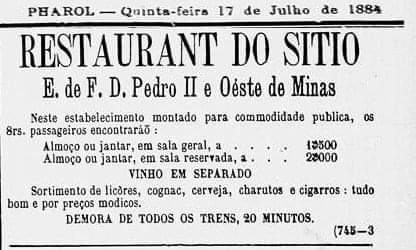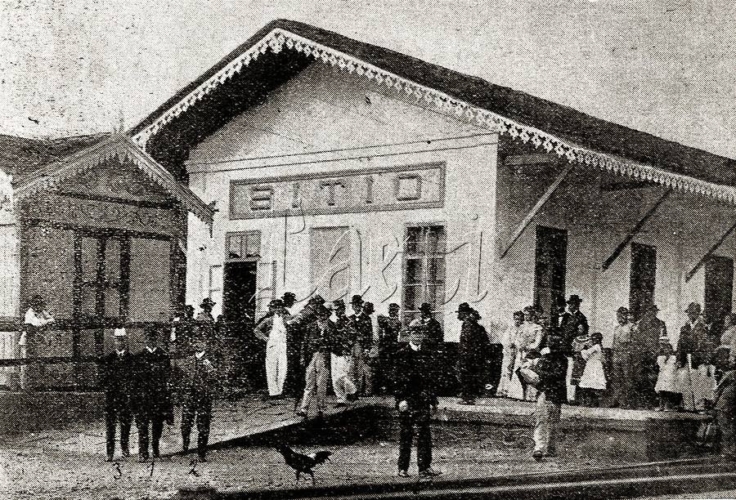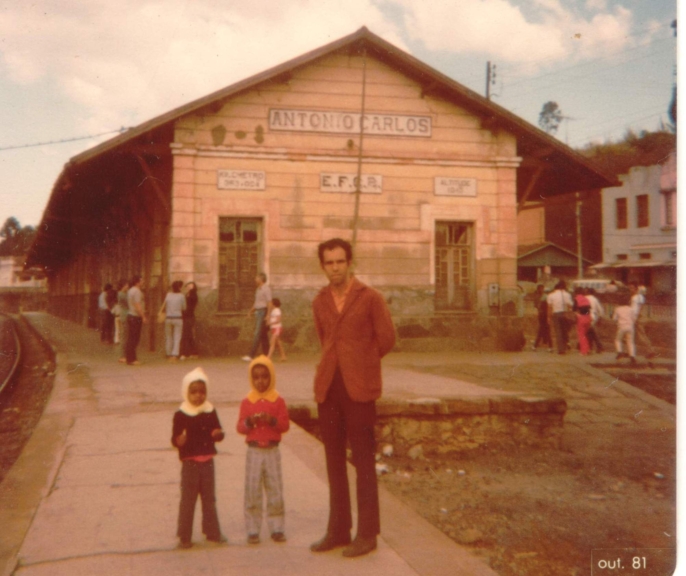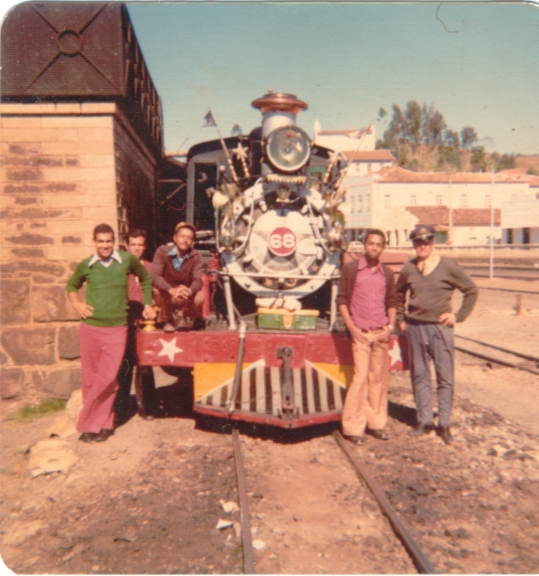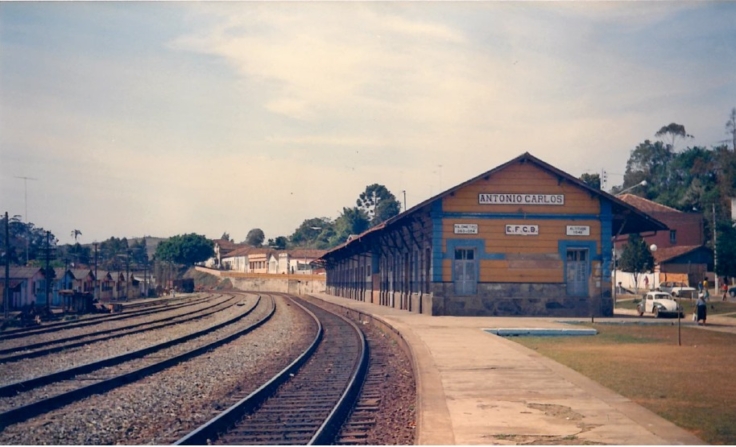
From here, we suggest you turn your phone horizontally. Viewing in landscape orientation makes map navigation even better!
Remember to move the map in all directions, to find the new stations.
Access the Map
1881-1931
Estrada de Ferro Oeste de Minas (Western Minas Railway)
1931-1938
Rede Mineira de Viação (Minas Rail Network)
1938-1965
Rede Mineira de Viação (Minas Rail Network)
1965-1976
Viação Férrea Centro-Oeste (Central-West Railroad Company) (Administered by RFFSA)
1976-1978
Belo Horizonte Superintendence (Administered by RFFSA)
1978-1996
Regional Superintendence 2 (Administered by RFFSA)
1996-2011
Ferrovia Centro-Atlântica (Central Atlantic Railway Company)
2011
Until today – VLI!
September 9, 1884
EFOM acquires the São João del-Rei to Oliveira Railroad
1886
EFOM inaugurates construction work in São João del-Rei
October 1887
The railway extension to Oliveira is inaugurated
April 1888
The railway extension to Ribeirão Vermelho is inaugurated
1888
The Ouro Preto railway line is inaugurated
1910
The Águas Santas branch line is inaugurated
August 21, 1911
Águas Santas Station is inaugurated
1923
César de Pina (Chacrinha) Station is inaugurated
1984
The Paraopeba Line is closed
Click on the icons to find out
more about the stations!
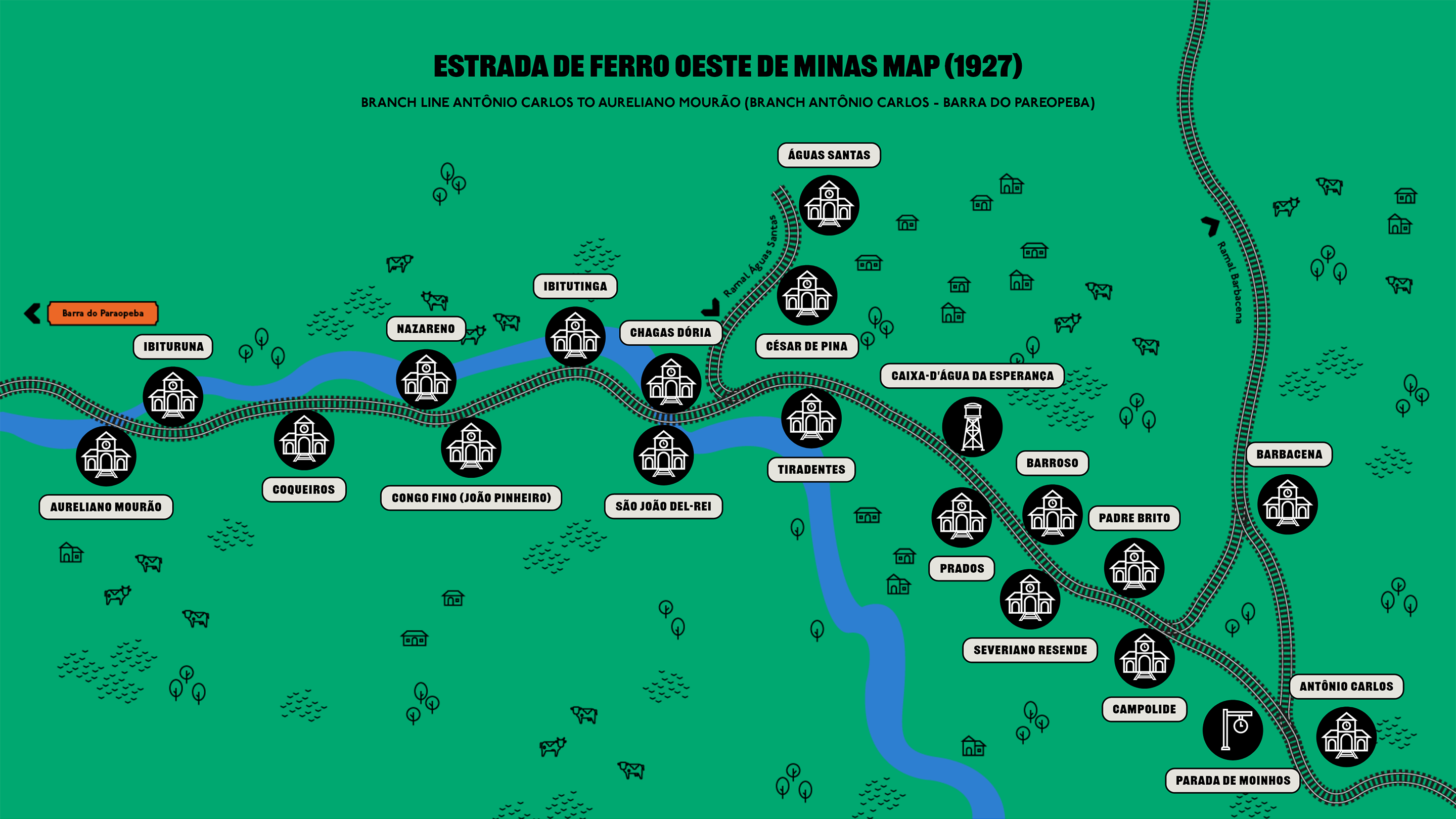
This map is an illustrative representation and was not constructed based on georeferencing.
AURELIANO MOURÃO
Aureliano Mourão Station was inaugurated in 1887, serving as a junction for lines leading to both Divinópolis and Lavras. The station was named in honor of Aureliano Martins de Carvalho Mourão, EFOM’s first president.
In 1940, the original building was replaced by a triangular-shaped structure to facilitate transfers and transshipments. Trains coming from São João del-Rei entered on the right side, bound for Divinópolis, while those arriving from Divinópolis headed towards Lavras on the left side. Similarly, trains from Lavras continued their journey towards São João del-Rei on the opposite side. Train schedules were coordinated to ensure simultaneous arrivals, resulting in a lively atmosphere.
The railway ceased operation in 1983, and since the late 1970s, the station no longer had any trains. However, its structure remained, as did the village around it, which became a meeting point for fishermen, enlivening the area on weekends.
The State Prosecutor’s Office filed a lawsuit to restore the Station, but it remains abandoned despite the court ruling that ordered its restoration.
Srories:
“The last one, indeed the very last train. We had to gather the equipment; the last station in the Sertão was Aureliano Mourão. So, we had to go there and collect all the materials from inside the station, including the telegraph and everything else. They would later come to dismantle the line from there to here. So, this last train, wow, it took a week by train, and there were a lot of incidents along the way… I almost derailed the locomotive once.”.
Francisco Marques, retired mechanic supervisor
“From here to Aureliano Mourão, they were all busy, and stations were the focal point. Cities were born around the station”.
Francisco Marques, retired mechanic supervisor
“The first time I came here to visit, in 1979, the train was running but I didn’t have a camera. The second time, in 1982, I brought a camcorder with me and stayed at Hotel Brasil to capture the train on film from here to Aureliano Mourão. But it was raining, and I thought I’d film it another time. The other time I decided to come was in January. I arrived in October, and by January, the train to Aureliano had already ceased operations. I recorded the journey to Tiradentes, which is the only route still available. A lot of people are disappointed because I could have captured footage showcasing the entire station and I could have it here today”.
Hugo Caramuru, retired, local resident
- AURELIANO MOURÃO – OLD STATION | Author unknown, 1941. Gustavo Zenquini’s personal collection.
- AURELIANO MOURÃO – OLD STATION PLATFORM | Author unknown, date unknown. Gustavo Zenquini’s personal collection.
- AURELIANO MOURÃO STATION – INAUGURATION | Author unknown, 1941. José Expedito Assunção’s personal collection.
- AURELIANO MOURÃO – NEW STATION | Herbert Graf, 1979. Gustavo Zenquini’s personal collection.
- LOCOMOTIVE 62 AND DIESEL LOCOMOTIVE IN AURELIANO MOURÃO | Herbert Graf, 1979. Gustavo Zenquini’s personal collection.
IBITURUNA
The Ibituruna station was inaugurated in 1887. However, with the closure of the railway line in 1984, the station ceased operations. In 2003, it was repurposed as a school by the city government. Subsequently, in 2010, it was restored once again, though its specific use remained undefined.
- PEOPLE IN FRONT OF IBITURUNA STATION | Author unknown, 1914. Gustavo Zenquini’s personal collection.
- IBITUTUNA STATION | Book Estrada de Ferro Oeste de Minas, 1922. Gustavo Zenquini’s personal collection.
- YOUNG PEOPLE IN FRONT OF IBITURUNA STATION | Author unknown, 1975. Gustavo Zenquini’s personal collection.
- STATIONARY TRAIN AT THE STATION | José Mauro, 1980. Gustavo Zenquini’s personal collection.
- LOCOMOTIVE 62 IN IBITURUNA | R. Gumbert, 1980. Gustavo Zenquini’s personal collection.
COQUEIROS
Coqueiros Station was inaugurated in 1917, and its construction features a structure similar to that of the César de Pina Station.
By the year 2016, the old building was repurposed as a library.
- PEOPLE IN FRONT OF COQUEIROS STATION | Author unknown, date unknown. Gustavo Zenquini’s personal collection.
- LOCOMOTIVA 66 IN CAIXA-D’ÁGUA | Jeffrey Stebbins, 1970s. Gustavo Zenquini’s personal collection.
- COQUEIROS STATION | Hugo Caramuru, 1980. Hugo Caramuru’s personal collection.
- LOCOMOTIVE 22 IN COQUEIROS | R. Gumbert, 1980. Gustavo Zenquini’s personal collection.
NAZARENO
In 1887, Nazareno Station was opened under the name Nazaré, which remained until the 1940s. Following the closure of the railway line in 1984, the station ceased operations. In 2003, it was repurposed as City Hall, although in a very precarious state of conservation.
Story:
“You see, there was a place there at Nazareno Station, before arriving — and the train whistled, and the more beautifully it whistled, the more we loved it.”.
Maria Lúcia, retired teacher and local resident
- ENGINEERS WITH A TRACK INSPECTIOIN CAR IN NAZARENO | O Malho Magazine, January 31, 1914. Gustavo Zenquini’s personal collection.
- TROLLEY IN NAZARENO | Author unknown, date unknown. Gustavo Zenquini’s personal collection.
- HEAD OF STATION, MR. MARTINHO | David Passarelli, 1976. Gustavo Zenquini’s personal collection.
- NAZARENO STATION | José Mauro, 1980. Gustavo Zenquini’s personal collection.
- NAZARENO STATION | Charles Whetmath, 1982. Gustavo Zenquini’s personal collection.
CONGO FINO (JOÃO PINHEIRO)
Congo Fino Station was inaugurated under the name Rio das Mortes due to its proximity to the river mouth. In 1908, its name was changed to João Pinheiro in honor of the governor of the state of Minas Gerais at the time. The name Congo Fino was adopted in 1943.
The station has since been demolished, leaving no trace behind.
Story:
“We departed from here to Congo Fino on the second to last train. It’s 47 km from here. It took us a while to reach there. And we arrived late; we went to play soccer since there was a football field there. I brought along a kitchen wagon and drinks. We had a team of about 10 people, quite a large team. At that small station, we had dinner. I had brought along a cook”.
Francisco Marques, retired workshop master
- LOCOMOTIVA 62 IN CAIXA-D’ÁGUA | Herbert Graf, 1979. Gustavo Zenquini’s personal collection.
- TRAIN AT THE CONGO FINO STATION | Walter Serralheiro, 1979. Gustavo Zenquini’s personal collection.
- MIXED TRAIN AT CONGO FINO STATION | Hugo Caramuru, 1980. Hugo Caramuru’s personal collection.
- CONGO FINO STATION | José Mauro, 1980. Gustavo Zenquini’s personal collection.
IBITUTINGA
The Ibitutinga Station opened in 1885, marking the extension of the Rede Mineira de Viação (RMV) by the Companhia Estrada de Ferro Oeste de Minas (Western Minas Railway Company, EFOM). This line linked Sítio (now Antônio Carlos), the end of the Dom Pedro II Railroad, to Aureliano Mourão in Bom Sucesso, branching towards Oliveira and Ribeirão Vermelho.
By 1984, steam traction on the 200 km route connecting Aureliano Mourão, Ibituruna, Nazareno, São João del-Rei, Tiradentes, and Sítio (Antônio Carlos) was discontinued.
Story:
“When it comes to Ibitutinga, the closest station is Nazareno, and before that, there’s a smaller station we refer to as a stop because the train only stopped briefly for passengers to embark and disembark”.
Gustavo Zenquini, railway researcher and local resident
- MAN IN FRONT OF THE IBITUTING STATION | Author unknown, October 1945. Tarcísio José de Souza’s collection.
- LOCOMOTIVE 68 IN IBITUTINGA | Author unknown, 1976. Gustavo Zenquini’s personal collection.
- WAGONS AT THE IBITUTINGA STATION | Author unknown, date unknown. Gustavo Zenquini’s personal collection.
- TRAIN IN IBITUTINGA | Hugo Caramuru, 1980. Hugo Caramuru’s personal collection.
SÃO JOÃO DEL-REI
São João del-Rei Station, inaugurated in 1881 as EFOM line’s main station, marked the end of the initial section connecting to Sítio station and the Dom Pedro II Railroad. It was extended to Antônio Carlos in 1887.
In 1989, IPHAN listed the São João del-Rei complex, including three stations (São João, Chagas Dória, and Tiradentes), railway yard buildings, and locomotives.
Today, the preserved 12 km stretch between São João del-Rei and Tiradentes hosts a tourist train, maintaining much of the station’s original character.
Stories:
“The station hasn’t changed all that much, but back in the day, it was all hustle and bustle, what with warehouses on both sides – one’s even a museum now. Moacir Rabelo was Head of Station then, and his son took over after him. And the tracks? They used to stretch way further than they do now”.
Moacir Silveira, retired train driver
“The train was the day’s highlight, a place where young people gathered, hoping to catch sight of newcomers or to meet for dates. It was the main event every single day, especially passenger services”.
Alexandre Campos, traction inspector and driver
- SÃO JOÃO DEL-REI STATION | Author unknown, 1901. Gustavo Zenquini’s personal collection.
- SÃO JOÃO STATION AND PLATFORM | Author unknown, 1901. Gustavo Zenquini’s personal collection.
- SÃO JOÃO PLATFORM | Gentil RFFSA, 1901. Gustavo Zenquini’s personal collection.
- YOUNG INDIVIDUAL AT THE STATION | Author unknown, 1970s. Gustavo Zenquini’s personal collection.
- SÃO JOÃO DEL-REI STATION | James Waite, 1977. Gustavo Zenquini’s personal collection.
- SÃO JOÃO DEL-REI STATION | PRESERVE, 1986. Preserve Collection.
CHAGAS DÓRIA
Chagas Dória Station was inaugurated in 1908, initially named Matosinhos Stop, situated in the countryside of São João del-Rei and connected to the stretch leading to Antônio Carlos.
Subsequently, with the extension of the line, the station served as a junction linking to the line heading to Aureliano Mourão, branching off at Av. Leite de Castro, known as the Sertão line.
The Station was listed in 1989 by the Brazilian National Institute of Historic and Artistic Heritage (IPHAN), alongside the São João del-Rei Railway Complex, and is situated within the urban perimeter of the city in the Matosinhos neighborhood.
Story:
“We lived there; the back of our house led to the courtyard of Chagas Dória. So when my father came from Antônio Carlos, he would bring sausages, salami, pumpkins from Campolide. He would get off in Chagas Dória, and we would open the gate in the courtyard. We would take a wheelbarrow there and pick up these things”.
Luthero Castorino, retired train driver
- CHAGAS DÓRIA STATION | Author unknown, date unknown. Gustavo Zenquini’s personal collection.
- MEN IN FRONT OF CHAGAS DÓRIA STATION | Author unknown, 1940s. Cesar Reis’s personal collection.
- YOUNG PEOPLE IN FRONT OF THE STATION | Author unknown, 1950s. Tio João’s personal collection.
- YOUNG PEOPLE GETTING ON THE TRAIN AT CHAGAS DÓRIA STATION | Helvécio Rodrigues, 1982.Gustavo Zenquini’s personal collection.
- VIEW TO THE CHAGAS DÓRIA STATION | Hugo Caramuru, February 23, 2014. Hugo Caramuru’s personal collection.
ÁGUAS SANTAS
Águas Santas Station, final stop on its namesake branch line, was established in 1911 to serve the local community and visitors from São João del-Rei heading to the thermal waters. Operational until 1966, it was later demolished and its location submerged by an artificial lake following decommissioning. After the train arrived at the final stop, the driver would wait for passengers to get off before starting the process to turn the locomotive around using the turntable. Now, in front of the bathing resort, there is the Casa das Águas Museum, maintained by the Minas Gerais Forestry Institute (IEF), dedicated to preserving the history and geological diversity of São José Environmental Preservation Area and of State Wildlife Refuge Libélulas da Serra de São José.
- ÁGUAS SANTAS RAILWAY STATION, 1950s. | Mucio Jansen Vaz, 1922. Extracted from the book “Estrada de Ferro Oeste de Minas – Trabalho Histórico Descriptivo (1880-1922)” [Western Minas Railway – Historical Descriptive Work (1880-1922)]”.
- TRAIN READY TO LEAVE ÁGUAS SANTAS RAILWAY STATION. | André Bello, 1913. NEOM ABPF Collection.
CÉSAR DE PINA
César de Pina Station was inaugurated on August 21, 1923. Initially named “Chacrinha,” the station was later renamed in honor of the engineer Augusto Cesar de Pinna, EFOM’s first director. Situated on land formerly owned by the Passarini family, Italian immigrants, César de Pina Station played a vital role for the surrounding residents. It served as a transportation hub for passengers, goods, manganese ore, and cattle destined for São João del-Rei. The Station building comprised a warehouse for storing goods arriving by train, a post office, and a ticket office. The train operated on rails with a 76 cm gauge and was decommissioned in 1966.
Subsequently, the César de Pina neighborhood emerged, formerly known until 1991 as Córrego das Pedras. Due to its poor condition of preservation, the City of Tiradentes, with the support of private funding, restored the station, reopening it in 2023. César de Pina Station was listed as cultural heritage by city law in 2007.
- CÉSAR DE PINA STATION | Author unknown, 1940s. Maria Aparecida Gomes Pitt Collection.
- CÉSAR DE PINA STATION | Bruno Campos, 2004. Bruno Nascimento Campos Collection.
TIRADENTES
Tiradentes Station was inaugurated in 1881, along with the inaugural branch of EFOM, originally named São José del Rey. In 1 890, a proposal was made to rename it in honor of the revered Tiradentes.
Today, the 12 km stretch between Tiradentes and São João del-Rei is preserved and serves as the route for the tourist train journey between the two cities. The station remains in good condition.
(If you want to know more, visit Tiradentes Memory Station!)
Story:
“Outside, at the time, there were the festivities of the Holy Trinity, which we call the Feast of Tiradentes. My house is close to the station there, there were trains crossing all day, it was the train that started at five o’clock in the morning, and the special one that went from here to Barroso until night.”
Alexandre Campos, traction inspector and driver
- LOCOMOTIVE 55 IN TIRADENTES | Julio Moraes, 1978. Gustavo Zenquini’s personal collection.
- TRACK INSPECTION CAR AT TIRADENTES STATION, 1982 | Paulo César Reis. Gustavo Zenquini’s personal collection.
- TRAIN DRIVER MOACIR SILVEIRA IN TIRADENTES, 1983 | Author unknown, 1983. Lozana Nascimento’s collection.
CAIXA-D’ÁGUA DA ESPERANÇA
Between Tiradentes and Prados Stations, there stood a water tank (“caixa d’água”, in Portuguese) inaugurated in 1913, serving as a vital refueling point for steam locomotives. Adjacent to it was a platform for loading and unloading goods and passengers, along with a small guardhouse where railway personnel operated. The rural village that developed on the outskirts of this stop became known as “Comunidade da Caixa d’água da Boa Esperança”. Translated to English, its name would be something like “Good Hope Water Tank Community.” Part of the platform is still there.
- PASSENGER TRAIN AT THE CAIXA-D’ÁGUA (WATER TANK) TRAIN STOP | Gentil, 1983. Gustavo Zenquini’s personal collection.
- LOCOMOTIVE PASSING THROUGH CAIXA D’ÁGUA DA BOA ESPERANÇA | Author unknown, date unknown. Tiradentes IPHAN Office Collection.
PRADOS
Prados Station, inaugurated in 1881, was a key stop along the “bitolinha” (narrow gauge) line, standing shoulder to shoulder with the São João del-Rei Station.
It served as a vital junction for both cargo and passenger traffic from two nearby cities: Prados, located 10 km away, and Dores de Campos, just 6 km from Prados. Dores de Campos stayed connected to the station through buses and minibuses.
However, in December 1984, the line was discontinued, forcing the station’s closure. Over time, abandonment set in, leading to looting that stripped the building of its doors and windows by 2003. The wooden plank flooring was torn up, and the once-sturdy ceiling began to sag. Later that same year, the roof collapsed entirely.
By 2004, Prados Station continued its decline. Although remnants like the portals, one of the warehouse doors, and the sliding plank floor remained, much of the structure was deteriorating. Nearly all the portals were dismantled, the wood stove removed, and even the tiles were taken.
Come 2018, only the station’s walls remained standing. While the small village around it stayed intact, the distant and indifferent Prados City Hall seemed to have entirely neglected the preservation of this historical gem.
- EVENT AT PRADOS STATION | Author unknown, date unknown. Almeida Franco Family Collection.
- HEAD OF STATION IN PRADOS | Ian Stephens, 1982. Rafael Muniz collection.
- RAILWAY WORKERS AT PRADOS STATION | Author unknown, date unknown. Gustavo Zenquini’s personal collection.
- LOCOMOTIVE AT PRADOS STATION | João Roberto Laque, 1980. Antônio F. Giarola Collection.
- LOCOMOTIVE 41 AT PRADOS STATION | Author unknown, date unknown. Gustavo Zenquini’s personal collection.
BARROSO
Opened in 1880, Barroso Station was the endpoint of the line before the railway extended to São João del-Rei in 1881. Barroso Station, opened in 1880, played a pivotal role in exporting local cement for many years, especially to the Itaipu Plant in Foz do Iguaçu, Paraná, involving several gauge changes along the way.
After its closure in 1984, the station’s building served various city functions before being designated as Barroso’s Historical Heritage. Unfortunately, the station is now in poor condition.
Stories:
“I traveled just once, you know? Brought back another memory of a trip to Barroso to visit my uncle, my mom’s brother, by train.”
Welber Santos, historian and local resident
“Since the 19th century, limestone production has been significant here, serving as the primary component for cement. In the 1960s, a significant factory was established in Barroso, with the railway playing a crucial role in its operations. This development made Barroso an essential hub for cement transportation, notably during military rule and for the construction of Brasília, enhancing the movement of cement to key national projects.”
Bruno Nascimento, researcher and local resident
“The military government’s focus on building Itaipu required cement from across the nation, emphasizing the significance of steam transport for Barroso’s cement delivery. Without the steam whistle, transporting the cement from Barroso, the selected brand for the Itaipu construction, would have faced significant hurdles.”
Luthero Castorino, retired train driver
“For a long time, I lived there. Then I moved and settled near another station, in Barroso. We’re delving into railway memories here, so my recollection of trains is vivid, as I lived right by the little station. I remember, though it’s a bit fuzzy, that I moved to São João del-Rei three years later. Whenever the train passed by, it was an event: ‘Let’s watch the train go by,’ we’d say. It was our cue for a shower. Mom used to remind us, back when we lived in Barroso, ‘It’s time to shower, the train’s about to pass by the little station’. So, back in Barroso, we’d eagerly anticipate the train’s arrival. Taking turns showering, Marcelo, the eldest, and Marília, my sister just a year and a half older than me, would join in the ritual. Together, we’d watch as the train chugged past the little station, a relic that still stands today, nestled near Seu Fidélis Guimarães’ lime oven.”
Maria Lucia, retired teacher and local resident
- PEOPLE AT BARROSO STATION | Author unknown, 1920s. Gustavo Zenquini’s personal collection.
- PEOPLE AT BARROSO STATION | Author unknown, 1926. Gustavo Zenquini’s personal collection.
- RAILWAY WORKERS AT BARROSO STATION | Author unknown, date unknown. Gustavo Zenquini’s personal collection.
- ADMINISTRATION WAGON IN BARROSO | Author unknown, date unknown. Gustavo Zenquini’s personal collection.
- LOCOMOTIVE 41 MANEUVERING AT BARROSO STATION | A. E. Dusty Durrant, 1980. Gustavo Zenquini’s personal collection.
- LOCOMOTIVE AT THE PORTLAND BARROSO CEMENT PLANT | Vicene Ribeiro Thomaz, 1974. Gustavo Zenquini’s personal collection.
BARBACENA
On November 19, 1910, with approval from General Hermes da Fonseca and Transports Minister Mr. Francisco Sá, construction began on the Estrada de Ferro Oeste de Minas (Western Minas Railroad) extension. This project, using a 0.76 m gauge, aimed to connect Ponte Nova (now Campolide) to Barbacena.
Construction on the branch started on September 5, 1912, but it wasn’t until March 17, 1923, that Barbacena became an originating point for EFOM. That day, the first train arrived in the city, carrying railway directors including Mr. Francisco Sá and Mr. Fernando de Melo Viana, along with other authorities. On June 28 of the same year, there was a celebration as well.
In Barbacena, EFOM initially used a temporary station, which was in operation until 1931. That year marked the beginning of EFOM trains departing from the same building as Barbacena Railway Station. The platform of Central do Brasil Station was extended to accommodate the 76 cm gauge used by EFOM trains.
In 1966, the last EFOM train departed from Barbacena Railway Station to São João del-Rei, following the closure of the Barbacena-Campolide line as part of a plan to eradicate unprofitable branches. This decision was based on the existence of a shorter road connection between Barbacena and São João del-Rei (56 km) compared to the railway route (96 km).
EFOM trains then only operated from Antônio Carlos, as was the case until 1931, until their complete shutdown in 1984.
Story:
“There was this train from the Barbacena branch line. It was built in the 20th century. That’s in about 1910, and it was completed in 1920. So, you had the train here sometimes, it was easier to transfer. For example, if you wanted to leave São João del-Rei and go to Belo Horizonte, it was easier for you to take the train from here to Barbacena, and in Barbacena to transfer to Central towards Belo Horizonte. Or Rio de Janeiro.”
Welber Santos, historian and local resident
- TRAIN IN FRONT OF BARBACENA STATION | Revista da Semana, May 1906. Hugo Caramuru’s personal collection.
- VIEW OF BARBACENA STATION | Author unknown, 1930. Gustavo Zenquini’s personal collection.
- RAILWAY WORKERS IN FRONT OF BARBACENA STATION | Guido Brunini, 1931. Gustavo Zenquini’s personal collection.
- TROOPS OF THE CONSTITUTIONALIST REVOLUTION EMBARKING | Unknown author. Part of Newton Siqueira de Araújo Lima’s collection.
- LOCOMOTIVE 20 AT BARBACENA STATION | Author unknown, 1954. NEOM ABPF Collection.
SEVERIANO RESENDE
Severiano de Resende Station, located in the Barroso municipality, was opened in 1913 along the Paraopeba Line at Kilometer 35.
Over the years, the station was demolished, leaving only fragments of the original structure.
- SEVERIANO RESENDE STATION | Helvetius Rodrigues, 1968. Gustavo Zenquini’s personal collection.
- TRAIN AT SEVERIANO DE RESENDE STATION | Author unknown, year unknown. Gustavo Zenquini’s personal collection.
PADRE BRITO
Ilhéus Station, opened in 1880 and later renamed Padre Brito (Father Brito), saw its train services halted in June 1983, and the line was entirely removed 18 months afterward.
Situated in a secluded spot near a dam of the same name, the station was eventually torn down, leaving only its platform.
By 2012, a house was constructed on this platform.
Stories:
“When I was born, my father was living at the station, in the Padre Brito area. When I was living in Padre Brito, we only had a small train in service; it arrived in the morning and left late. Not much happened around.”
Moacir Silveira, retired railway worker and train driver
“I experienced riding the train, even on long stretches. I explored it right up until 1982 and I even went to Padre Brito, near Antônio Carlos. That period, especially the day before I left, remains unforgettable. I couldn’t even sleep the night before.”
Alexandre Campos, traction inspector and driver
- LOCOMOTIVE 60 IN FRONT OF PADRE BRITO STATION | Author unknown, date unknown. Gustavo Zenquini’s personal collection.
- LOCOMOTIVE 40 LEAVING PADRE BRITO STATION | John West, September 1977. Gustavo Zenquini’s personal collection.
- PEOPLE AND LOCOMOTIVE 42 | Author unknown, date unknown. Gustavo Zenquini’s personal collection.
- LOCOMOTIVE ON THE BRIDGE NEAR PADRE BRITO | Author unknown, 1977. NEOM ABPF Collection.
CAMPOLIDE
In 1909, 15 years prior to the Barbacena branch line opening, the newspaper O Estado de S. Paulo reported on the Barbacenense Spinning and Weaving factory’s construction near Villa Campolide, Barbacena, hinting at a potential earlier stop there related to the factory, before the official 1923 station setup.
Opened in 1923, Campolide Station initiated the branch line connecting to the Barbacena Station of the E. F. Central do Brasil (Central do Brasil Railway), marking a significant development in the railway network. Although the area was initially named Ponte Nova, the station was inaugurated as Campolide, becoming a critical junction for EFOM lines from Barbacena and Sítio, later known as Antônio Carlos. Train service ceased in June 1983, and the line was completely removed 18 months later.
Despite its abandonment, Campolide Station isn’t in bad condition. Since 1991, it has been part of the Campolide district in the Antônio Carlos municipality.
- LOCOMOTIVE 40 IN CAMPOLIDE | James Waite, 1977. Gustavo Zenquini’s personal collection.
- LOCOMOTIVE 42 IN CAMPOLIDE | James Waite, date unknown. Gustavo Zenquini’s personal collection.
- LOCOMOTIVE 60 IN CAMPOLIDE | Author unknown, date unknown. Gustavo Zenquini’s personal collection.
- LOCOMOTIVE 38 IN CAMPOLIDE | Klaus Matzka, 1982. Gustavo Zenquini’s personal collection.
- PEOPLE AT CAMPOLIDE STATION | Ian Stephens, date unknown. Gustavo Zenquini’s personal collection.
MOINHOS STOP
Opened in 1923, the Moinhos Stop is nestled in the countryside between Antônio Carlos and Campolide stations. It is no longer in use.
- MOINHOS STOP | Virna Buzelin, 2000. Collection from the Blog “Estações Ferroviárias” (Railway Stations).
ANTÔNIO CARLOS
Antônio Carlos Station, initially called Sítio station, is recognized as the starting point (km 0) for the first EFOM line, where it connects with the Dom Pedro II Railroad. Sítio Station was inaugurated in 1878, introducing the 0.76 gauge to the railway system.
This area was part of the Barbacena district, known as Bias Fortes, until 1948 when it became its own municipality, renamed Antônio Carlos to honor a president native to the region.
The station closed in 1982 but is well-maintained, featuring the EFOM milestone monument.
Stories:
“We’d stop for the night in Antônio Carlos and we would prepare the train, ensuring it ran on minimal steam the next day.”
Luthero Castorino da Silva, retired train driver
“I operated these machines from Aureliano Mourão to Antônio Carlos, a distance of two hundred kilometers. Later, I moved to Lavras and retired there.”
Moacir Silveira, retired train driver
- SÍTIO STATION | Marco Giffoni, 1910. Gustavo Zenquini’s personal collection.
- NEWS ABOUT RESTAURANT AT STATION IN SÍTIO | Pharol Newspaper, 1884. Gustavo Zenquini’s personal collection.
- PEOPLE AT SÍTIO STATION | Author unknown, date unknown. Gustavo Zenquini’s personal collection.
- FAMILY IN FRONT OF ANTÔNIO CARLOS TRAIN STATION | Author unknown, 1981. Gustavo Zenquini’s personal collection.
- RAILROAD WORKERS AT ANTÔNIO CARLOS WATER TANK | Author unknown, date unknown. Gustavo Zenquini’s personal collection.
- ANTÔNIO CARLOS STATION | Author unknown, date unknown. Gustavo Zenquini’s personal collection.
